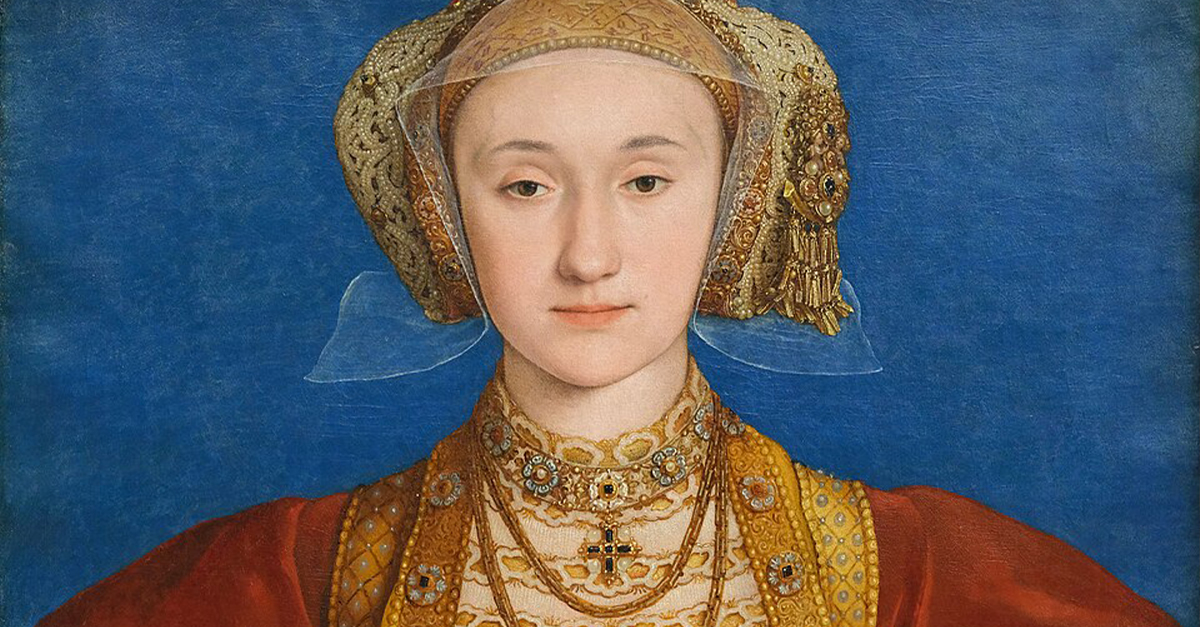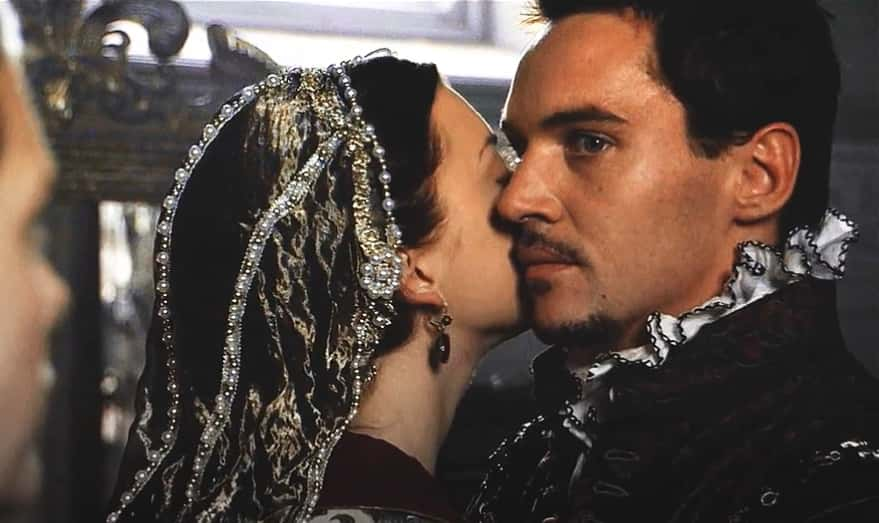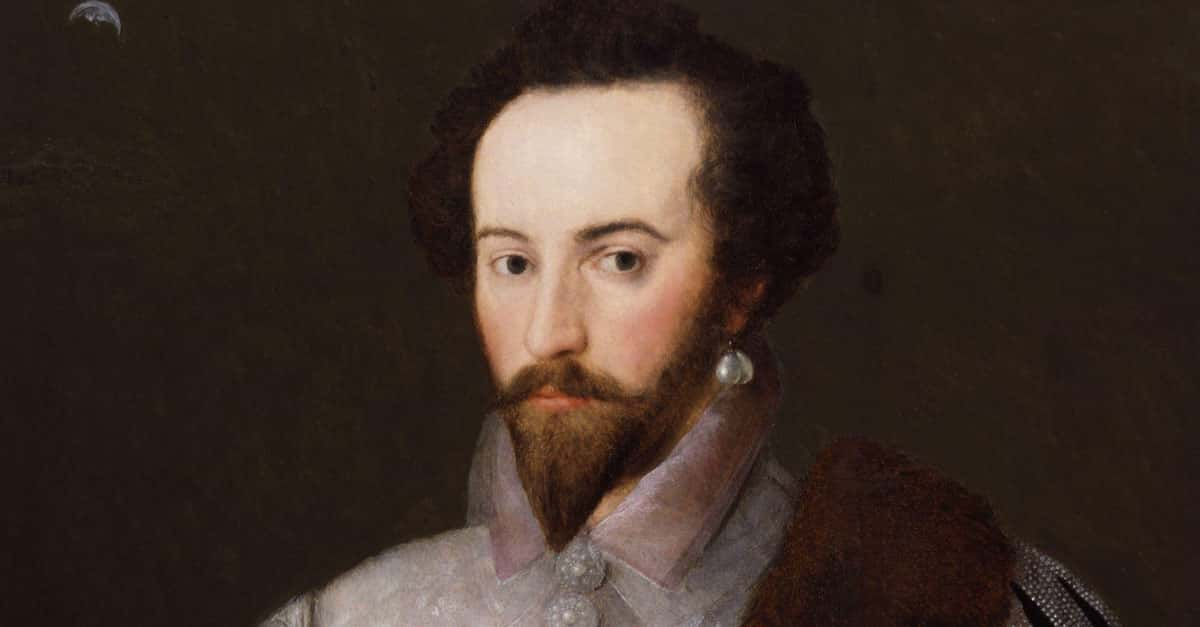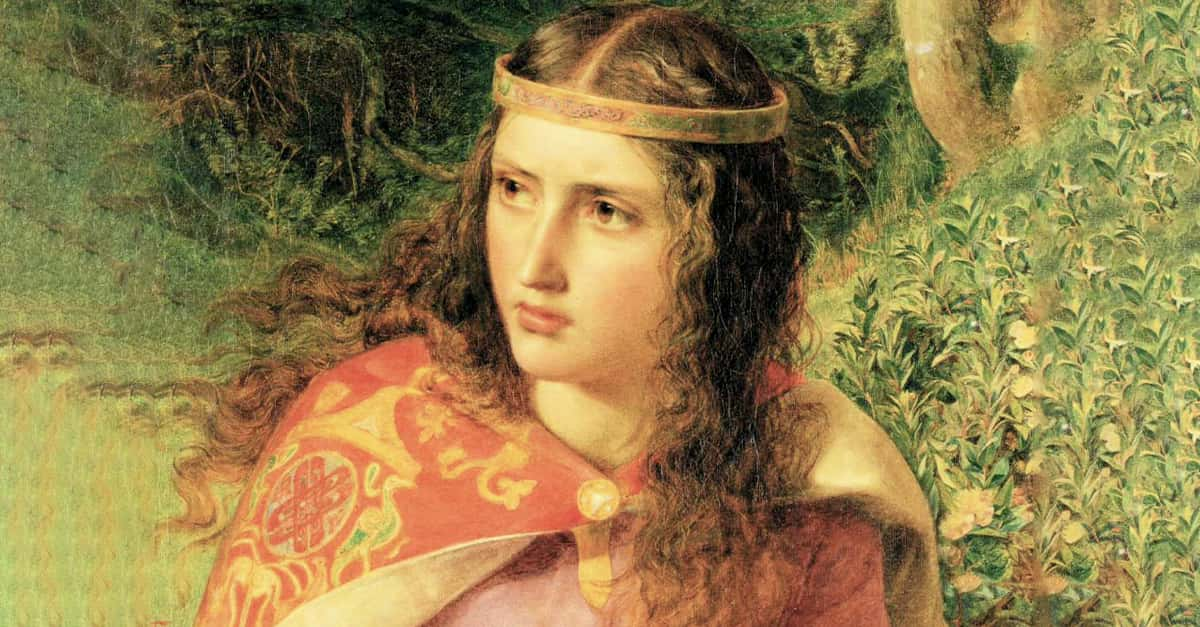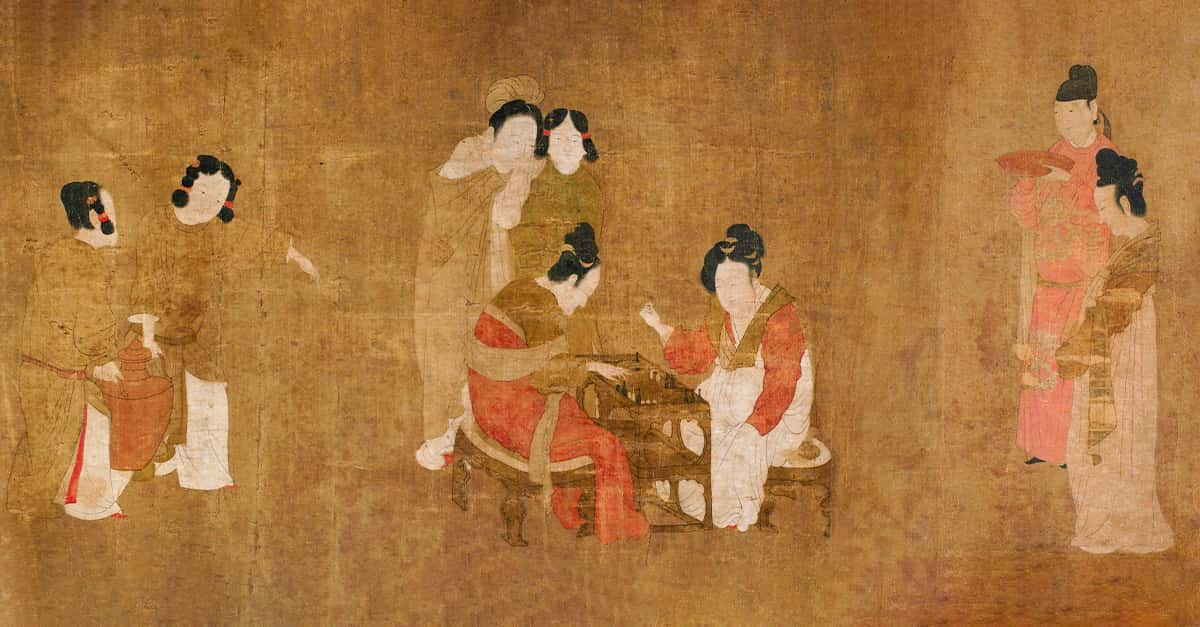Married To Chaos
We know of Catherine of Aragon, Anne Boleyn, Jane Seymour, Anne of Cleves, Catherine Howard, and Catherine Parr for all the wrong reasons. Or rather, one wrong reason: Their husband King Henry VIII. But what were these women really like? How did they handle their very different, if very tragic fates?
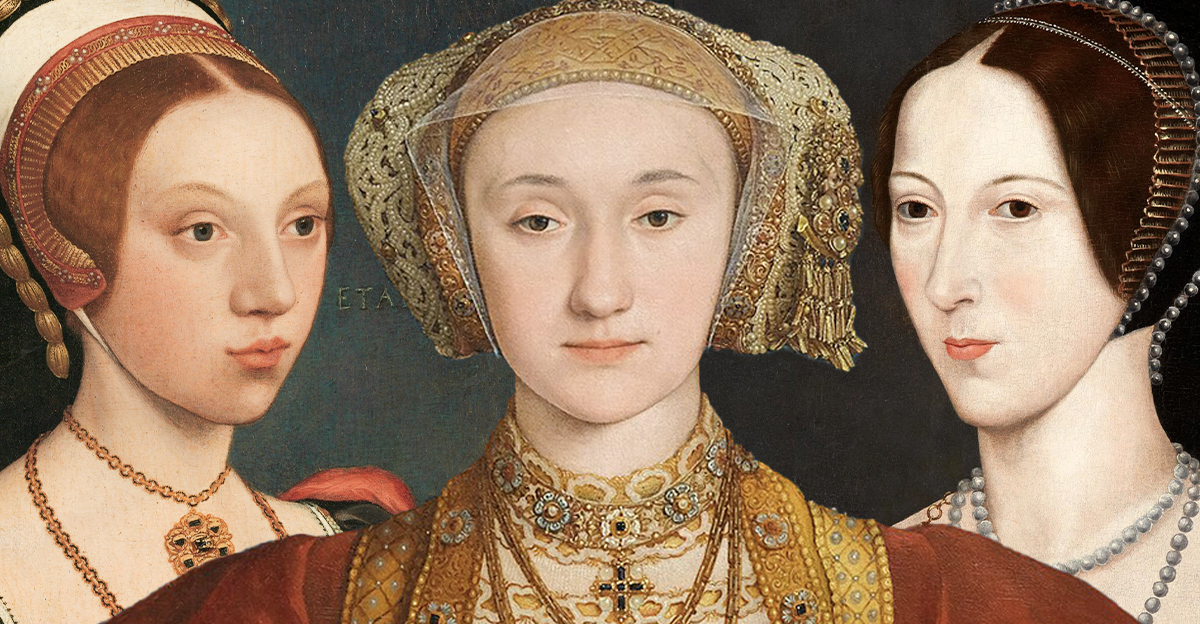
Catherine of Aragon
Married to King Henry VIII from 1509 to 1533, Catherine of Aragon wasn’t just Henry’s first wife, she was also his longest marital relationship. But Catherine came into the union with baggage of her own. She had actually been married to Henry’s older brother Arthur, the first Prince of Wales, before he perished just after their honeymoon.
At 16, then, Catherine was already a widow—and her road to Henry was more dangerous than you’d think.
 Lucas Horenbout, Wikimedia Commons
Lucas Horenbout, Wikimedia Commons
His Father Propositioned Her
Catherine was the daughter of the powerhouse couple King Ferdinand and Queen Isabella of Spain, so even after Arthur’s passing she was still a powerful Tudor chess piece. So much so that Henry’s middle-aged father considered marrying her after his son’s passing. Luckily, Catherine’s own family objected to this idea, and her second betrothal was thankfully to Henry.
From the beginning, this was its own kind of nightmare.
 All3 Media, The Spanish Princess (2019– 2020)
All3 Media, The Spanish Princess (2019– 2020)
She Had A Long Road To The Crown
It took years for Catherine to actually marry Henry, with the young prince even breaking off their engagement at one point. But there was an even bigger problem. Because she had been married to Arthur, Catherine had to get special dispensation from the Pope in order to walk down the aisle to his brother Henry. In so doing, she also had to swear that her first marriage had never been consummated. You can cue the ominous music here.
 National Portrait Gallery, Wikimedia Commons
National Portrait Gallery, Wikimedia Commons
She Finally Became Queen
Henry, who was five years younger than Catherine, finally made it official with her on June 11, 1509, when she was 23 years old and he was still 17. Nonetheless, Henry was now King Henry VIII—and a strapping, handsome young adult—and Catherine had her own coronation a handful of days after her wedding.
Unfortunately, the cruelties were just around the corner.
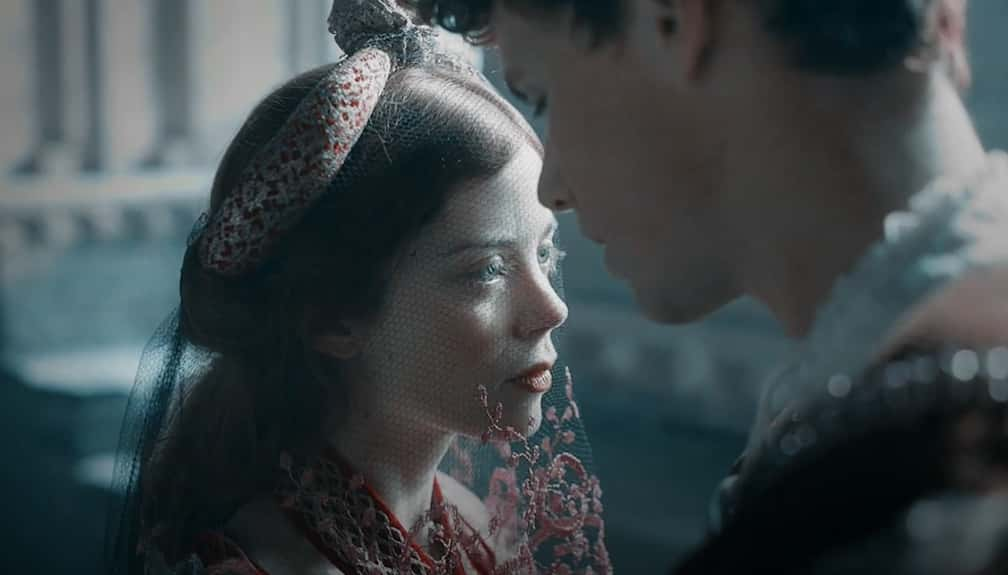 The Spanish Princess (2019– ), All3 Media
The Spanish Princess (2019– ), All3 Media
She Suffered In Private
One of Catherine’s only jobs was to give Henry a male heir, but this road was riddled with tragedy. Over the next months and years, Catherine suffered through numerous miscarriages and stillborn births. Worst of all, perhaps, was the seemingly healthy baby boy who she gave birth to in January 1511, but who passed after less than two months.
She had other things to worry about during this time, too.
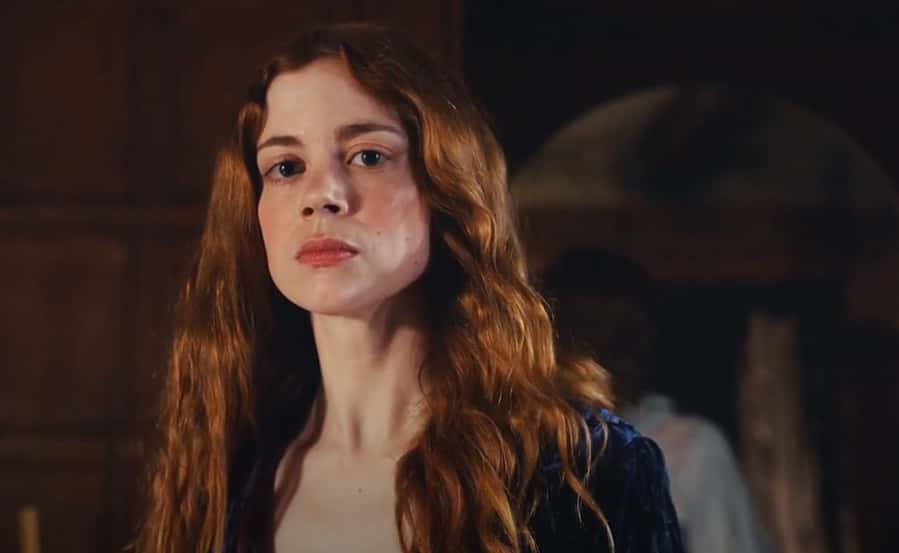 The Spanish Princess (2019– ), All3 Media
The Spanish Princess (2019– ), All3 Media
She Was A Warrior Queen
When Catherine served as Regent in 1513 while Henry fought in France, Scotland saw this as an opportunity to attack while a “weak” woman ruled. They were in for an unpleasant surprise: Catherine marshaled allies, and then famously rode toward Scotland in complete armor to give an inspirational speech to her men. The best part? She was seven months pregnant at the time.
But in the end, Catherine paid the piper.
 The Spanish Princess (2019– ), All3 Media
The Spanish Princess (2019– ), All3 Media
She Lost So Many Children
Perhaps because of these stresses, Catherine went into premature labor just after this, resulting in a stillborn boy. Unfortunately, the tragedies kept coming: She had another stillbirth after that, and though she finally carried a healthy baby to term in 1516, that baby was a girl—the future Queen Mary I of England—and not what Henry wanted.
It was the beginning of the end.
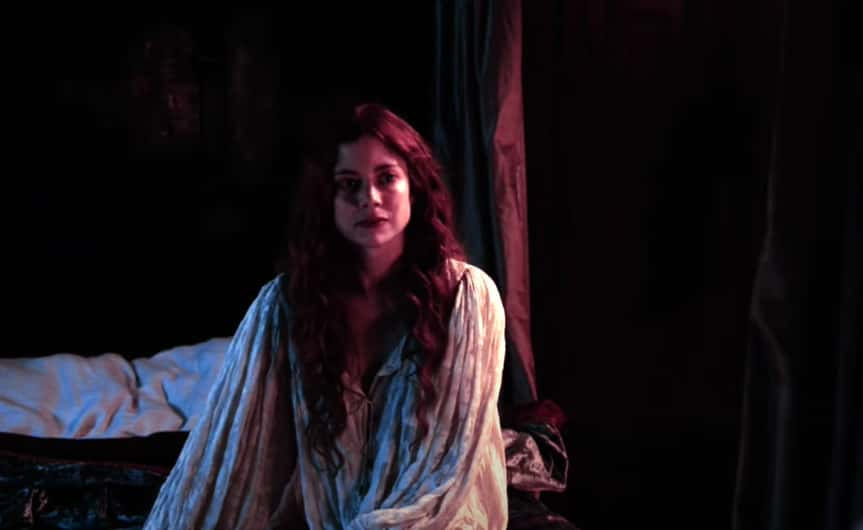 The Spanish Princess (2019– 2020), All3 Media
The Spanish Princess (2019– 2020), All3 Media
He Replaced Her
By the 1520s, after yet another stillbirth in 1518, Henry and Catherine were all but estranged. To make it worse, Henry had fallen head over heels for Anne Boleyn and began obsessing over how to split from Catherine. In particular, Henry became (conveniently) convinced that God had cursed him for lying with his brother’s wife, and that the only way he would ever have a son was to do it with someone else.
He did not find a willing ear in Catherine.

History's most fascinating stories and darkest secrets, delivered to your inbox daily.
She Stood Her Ground
Catherine was adamant she and Arthur had never slept together, that there was no religious grounds for a split, and that she would never back down willingly from her position as queen. In a desperate moment, Henry even suggested that Catherine join a convent—to which she snapped, "God never called me to a nunnery. I am the King's true and legitimate wife”.
Faced with this, Henry had to find more brutal means to drop Catherine.
 The Spanish Princess (2019– ), All3 Media
The Spanish Princess (2019– ), All3 Media
She Was Part Of “The King’s Great Matter”
With Catherine not making it easy, Henry began the “King’s Great Matter”. For years he tried to woo, weedle, and threaten the Church into annulling his marriage—eventually simply taking over as the Head of the Church, annulling his own union, and kick-starting the English Reformation.
Behind the scenes of this great historical battle, Catherine suffered in unbearable ways.
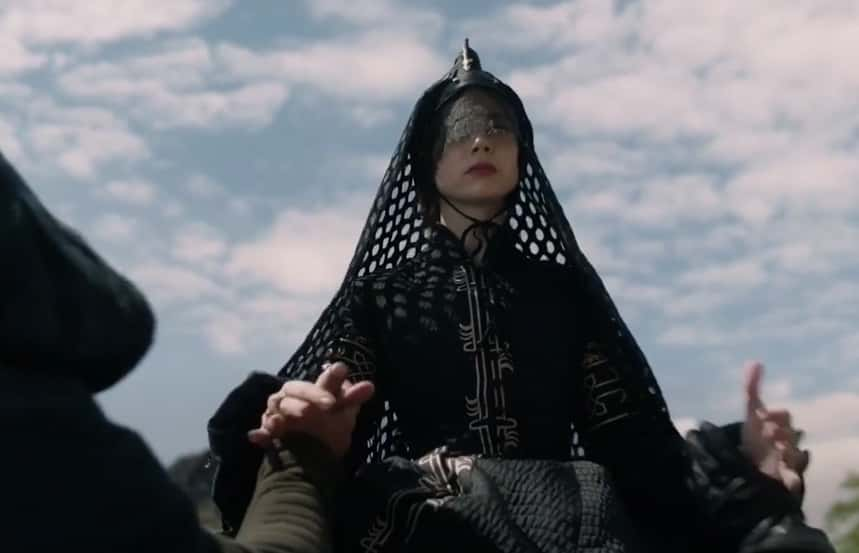 The Spanish Princess (2019– 2020), All3 Media
The Spanish Princess (2019– 2020), All3 Media
She Hurt Herself
Although Catherine put on a brave face throughout this, she began observing dark rituals. Relegated to moving from remote castle to remote castle away from Henry’s court, she would regularly inflict misery on herself, refusing most food and even wearing a painful hairshirt. Perhaps she wanted her outsides to match her insides: as she said of this time, “It is enough to shorten ten lives, much more mine”.
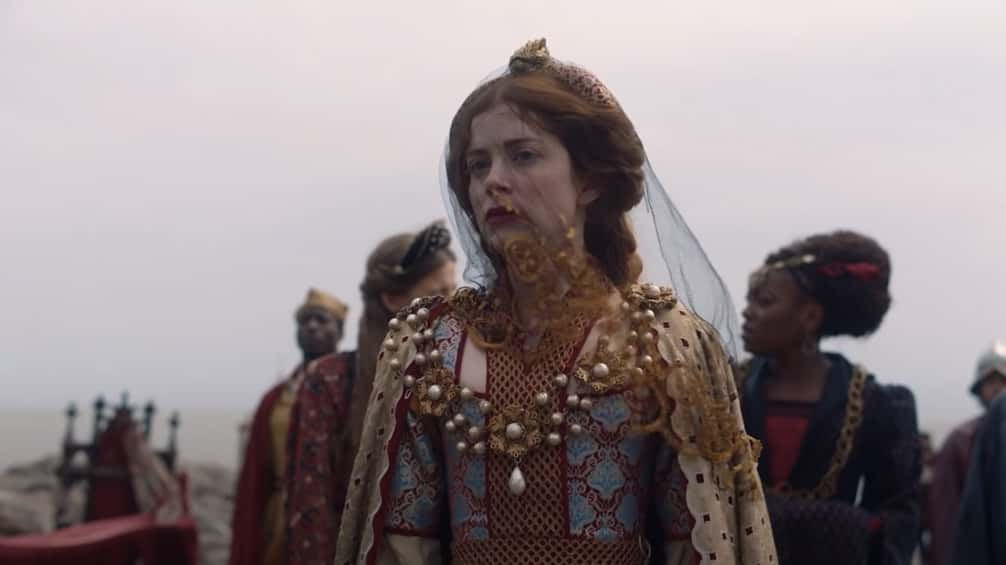 The Spanish Princess (2019– 2020), All3 Media
The Spanish Princess (2019– 2020), All3 Media
She Perished In Obscurity
In her youth, Catherine was called “the most beautiful creature in the world,” but decades and many pregnancies later, King Francis I of France would call her “old and deformed”. By her late 40s—just after Henry VIII finally got his marriage to her officially annulled—she was on death’s door.
She perished in 1536 at the age of 50, and her cause of death was as fitting as it was eerie. When attendants prepared her body for burial, they found that her heart was jet black; she had likely passed from cancer of the heart. Even then, her rival Anne Boleyn met an undeniably worse fate.
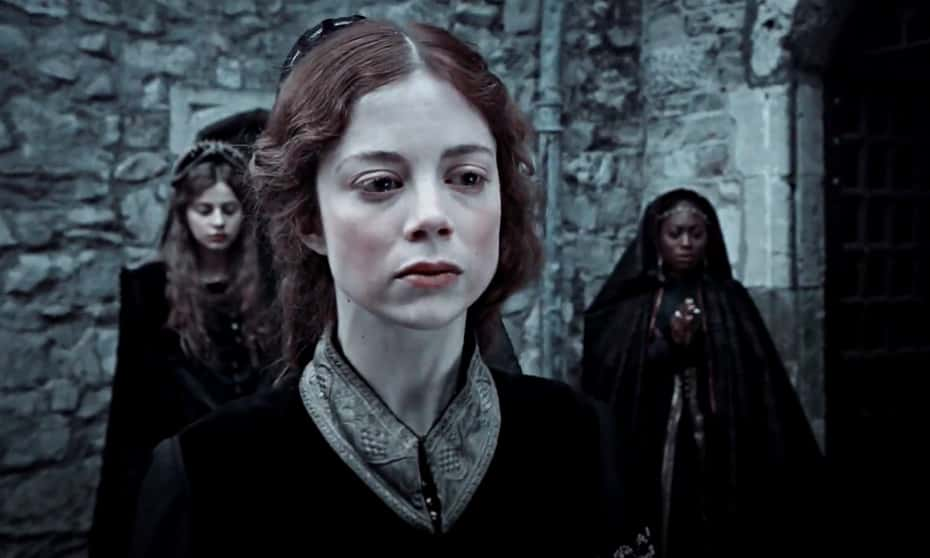 All3 Media, The Spanish Princess (2019– 2020)
All3 Media, The Spanish Princess (2019– 2020)
Anne Boleyn
Anne Boleyn entered Henry VIII’s court as Catherine of Aragon’s lady-in-waiting. A dark, captivating, and whip-smart beauty, she almost immediately caught Henry’s eye; after all, he had already seduced Anne’s sister Mary. But Anne didn’t just know how to catch his attention, she also knew how to keep it.
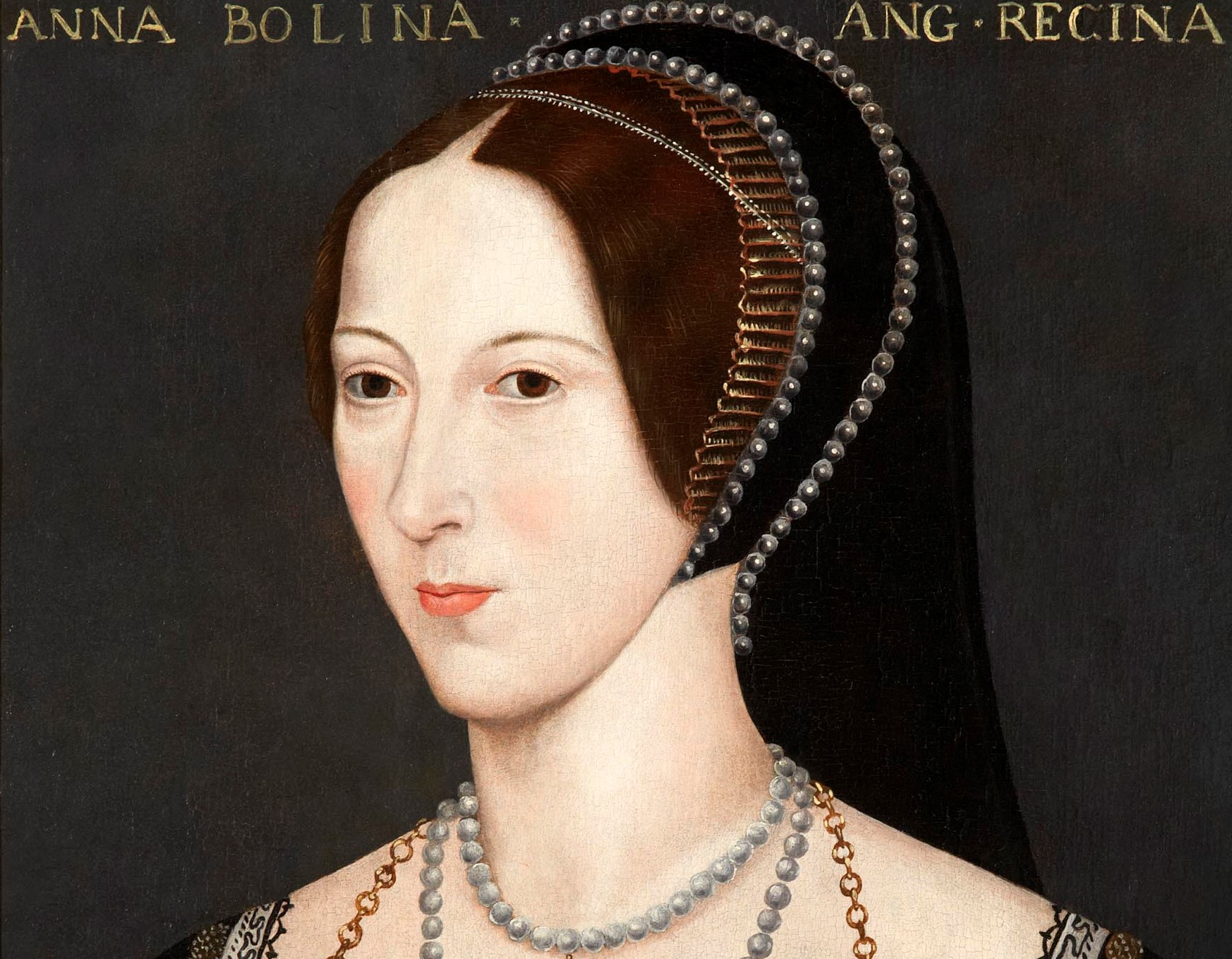 English school, Wikimedia Commons
English school, Wikimedia Commons
She Refused To Bed Him
Anne entertained Henry’s advances, but staunchly refused to sleep with him…unless he extricated himself from Catherine of Aragon and married her. It worked like a charm: Soon enough, she’d earned a proposal from the king, and the pair began collaborating with Henry’s religious officials to get the annulment.
But while Catherine of Aragon had a tough time during the “King’s Great Matter,” Anne Boleyn was just behind her.
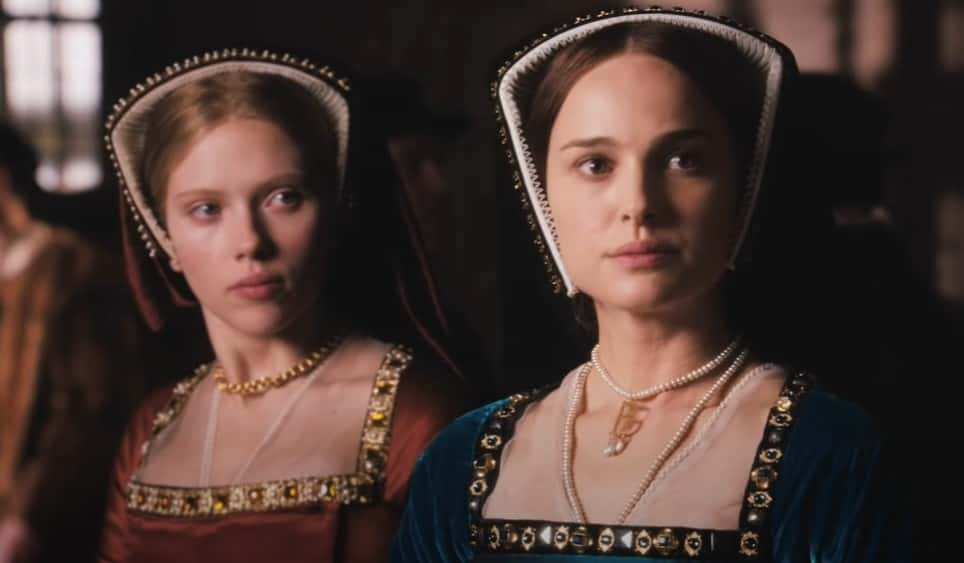 The Other Boleyn Girl (2008), Focus Features
The Other Boleyn Girl (2008), Focus Features
She Was The Most Hated Woman In England
The common people of England adored Catherine of Aragon and, accordingly, despised the king’s new love Anne Boleyn. As Boleyn grew in influence, their hatred climaxed in a horrific event. When Anne was returning home one evening, an angry mob of women attacked her, forcing the royal mistress to make a hasty escape on a boat.
But no amount of public outrage could stop what happened next.
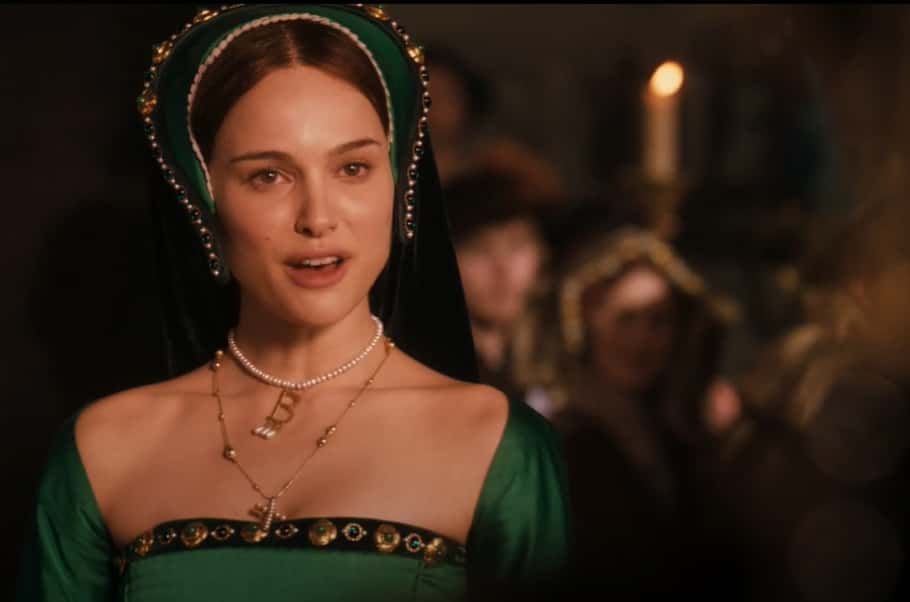 The Other Boleyn Girl, Focus Features
The Other Boleyn Girl, Focus Features
She Became Queen
On January 25, 1533, after finally getting the annulment from Catherine they sought, King Henry VIII and Anne Boleyn married. But even then, they were still holding onto a secret: They’d already married the previous November, and Anne—having finally conceded to Henry’s desires after this wedding—was currently pregnant.
Unfortunately, this triumphant beginning would also be the high point of Anne’s reign. The rest was her downfall.
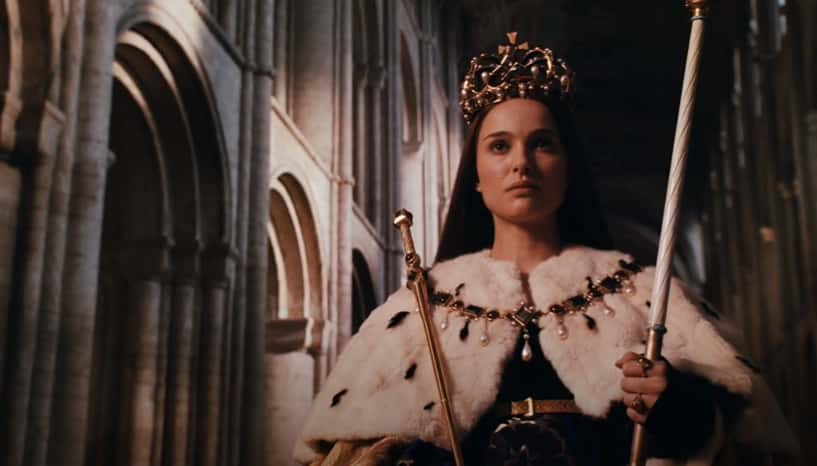 The Other Boleyn Girl, Focus Features
The Other Boleyn Girl, Focus Features
She Had A Girl
Anne Boleyn was supposed to save the House of Tudor and give Henry a male heir, but the child she gave birth to in September 1533 was a girl, the future Queen Elizabeth I. The effects were immediate and devastating. Henry had been so sure it was a boy that he not only canceled celebratory events intended for the new “prince,” he also began to resent Anne.
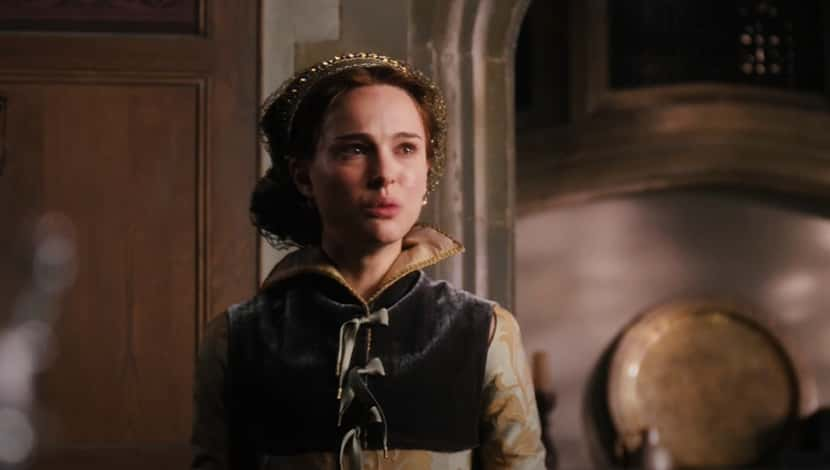 The Other Boleyn Girl, Focus Features
The Other Boleyn Girl, Focus Features
She Was Too Smart For Henry
Anne always had a sharp tongue and mind, but Henry began to take more and more umbrage at these qualities. Their relationship, never calm—one commenter described it as “storm followed sunshine, sunshine followed storm”—now turned volatile, with Henry constantly demanding Anne submit to him.
The next events only made it worse.
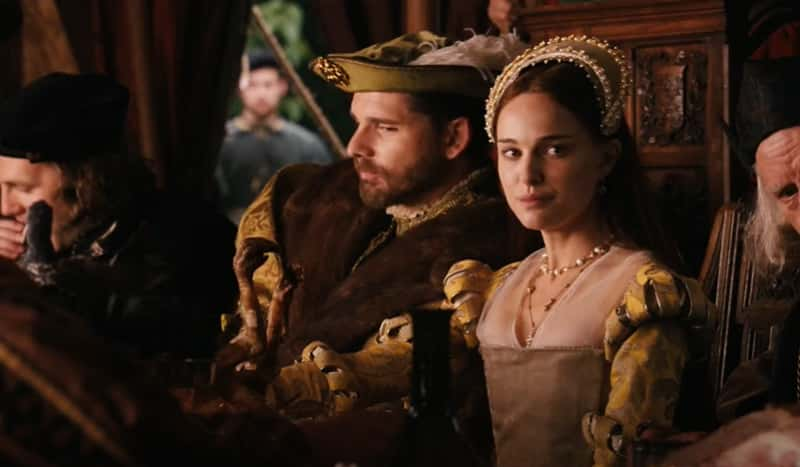 The Other Boleyn Girl, Focus Features
The Other Boleyn Girl, Focus Features
She Tried And Tried Again
In the end, pregnancy came no easier for Anne Boleyn than it did for Catherine of Aragon, and she suffered multiple miscarriages after having Elizabeth. In early 1536, she was pregnant again and doing everything she could to keep the baby and not suffer another miscarriage.
All the while, her death knell was tolling.
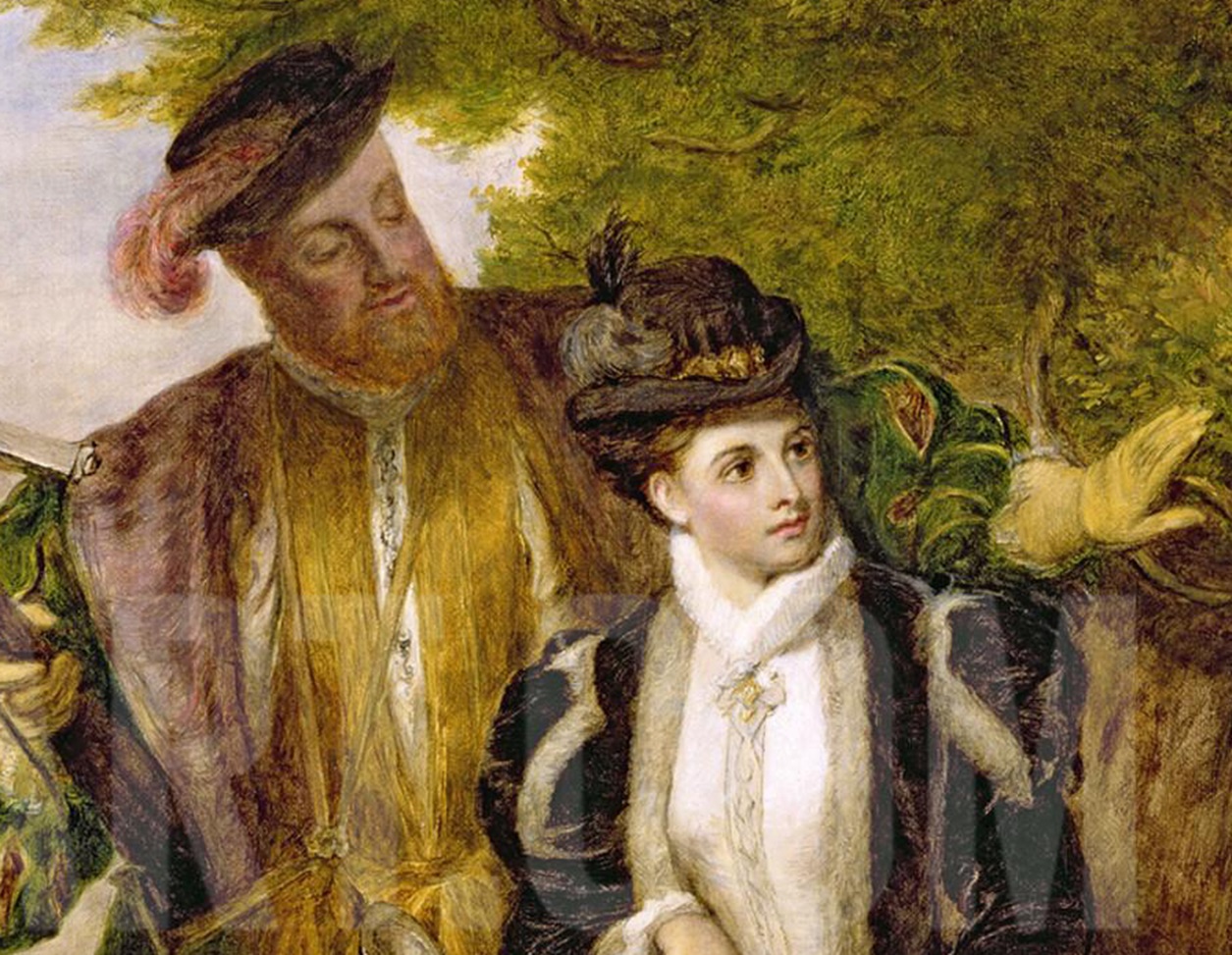 William Powell Frith, Wikimedia Commons
William Powell Frith, Wikimedia Commons
Karma Came For Her
Around this time, Henry VIII began distancing himself from Anne just as he had with Catherine. Instead, he spent more and more time with the pretty Jane Seymour. Anne watched as Henry plied Jane with gifts, including a necklace containing a locket with his portrait inside. She didn’t take it well.
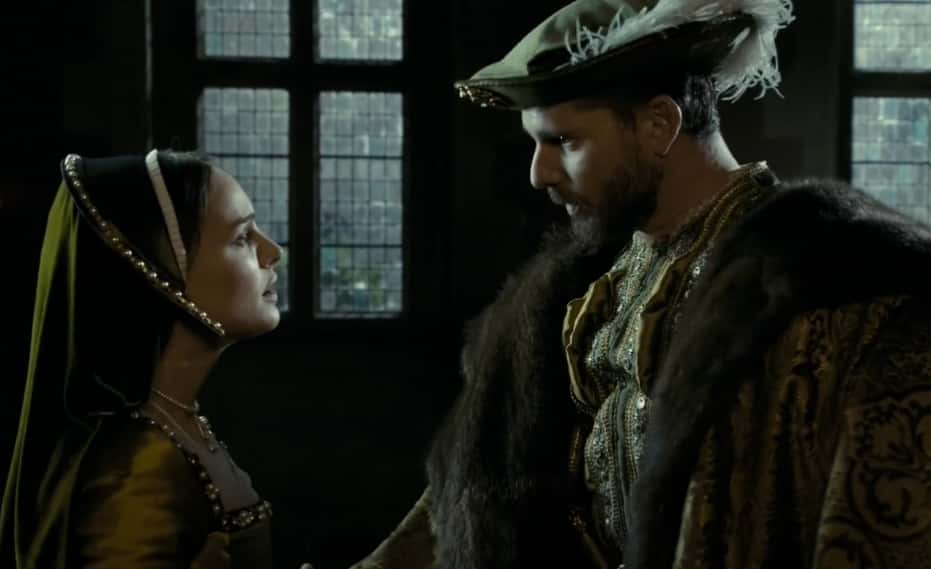 The Other Boleyn Girl, Focus Features
The Other Boleyn Girl, Focus Features
She Snapped
Anne was never one to hold her tongue, and this all became too much. One day, after watching Jane opening and closing the gift locket brazenly in front of her, Anne tore at the chain so hard she hurt her fingers. In another incident, she broke into a rage after walking into a room and seeing Jane on the King’s lap. Then came the final stressor.
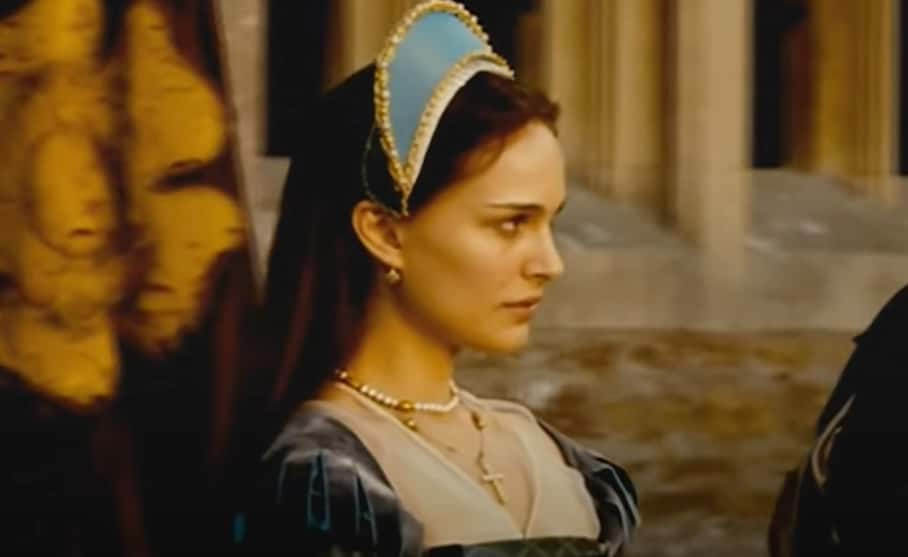 The Other Boleyn Girl, Focus Features
The Other Boleyn Girl, Focus Features
She Suffered A Shock
In a fateful 1536 jousting match, King Henry had an accident and was knocked unconscious for two hours. The results were disastrous. The shock of it likely spurred Anne to miscarry the child she had been carrying—a baby boy. When one ambassador heard the news, he noted that Anne "has miscarried of her savior”.
Henry now truly turned on Anne, and in the blink of an eye.
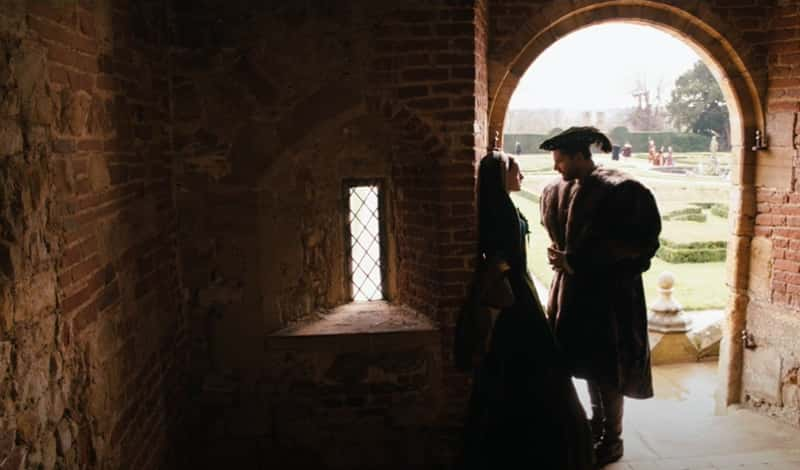 The Other Boleyn Girl, Focus Features
The Other Boleyn Girl, Focus Features
He Plotted Her End
From then on, Henry was through with Anne and planning to marry Jane Seymour. Accordingly, he began spreading around his belief that Anne had literally “bewitched” him into marrying her. As if that weren’t enough, he then accused male courtiers who had known Anne—including her brother George—of sleeping with his wife.
By May, Henry had built up his “case” enough to have arrested Anne for high treason and thrown in the Tower of London. Within weeks, she was put on trial.
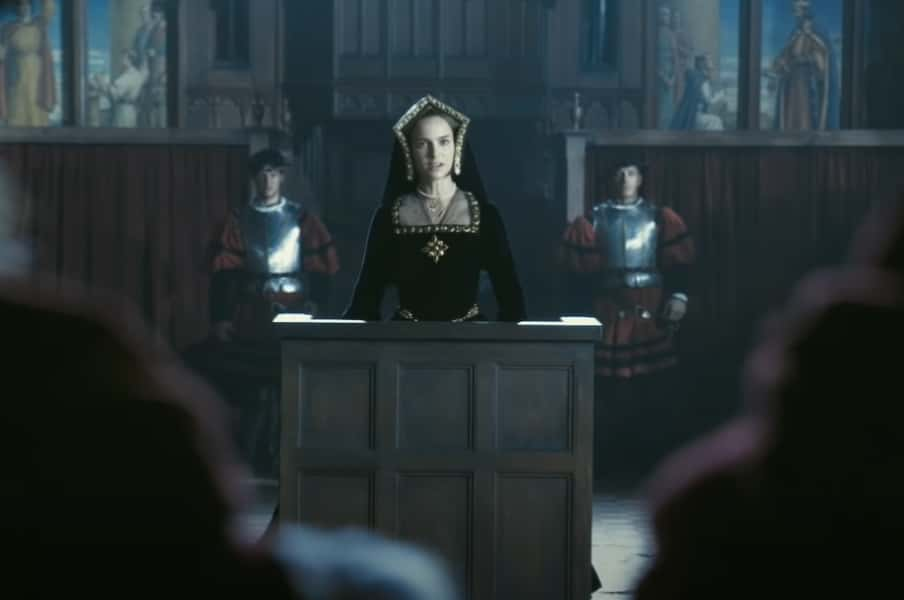 The Other Boleyn Girl (2008), Focus Features
The Other Boleyn Girl (2008), Focus Features
She Met An Infamous End
Anne Boleyn’s trial ended the way it was always going to end: With a guilty verdict and an execution. In the days before she met the blade, she’s reported to have joked of the executioner, “I hear he’s quite good. And I have a very small neck!"
On May 19, 1536, Anne Boleyn met her end somewhere between the ages of 28 and 35. Henry, however, was already moving on.
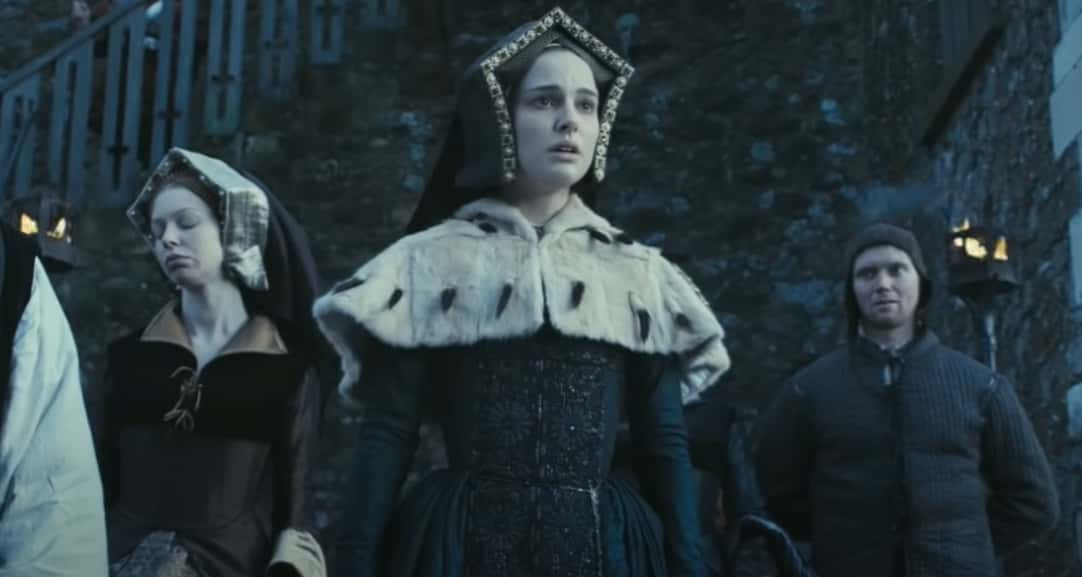 Focus Features,The Other Boleyn Girl (2008)
Focus Features,The Other Boleyn Girl (2008)
Jane Seymour
Where Catherine of Aragon was stately and confident and Anne Boleyn was dark and witty, Jane was, according to one courtier, “the gentlest woman I ever knew”. Coming from a less erudite background than either of Henry’s previous queens, Jane could also just barely read and write—but none of this stopped her.
 Hans Holbein the Younger, Wikimedia Commons
Hans Holbein the Younger, Wikimedia Commons
She Snatched Up The Crown
King Henry VIII was officially betrothed to Jane Seymour just one day after Anne Boleyn went to the chopping block, albeit amid (convincing) rumors that they had already started sleeping together. They were married 10 days later in Whitehall palace, and presumably set about making heirs immediately. Still, Jane had some changes in mind.
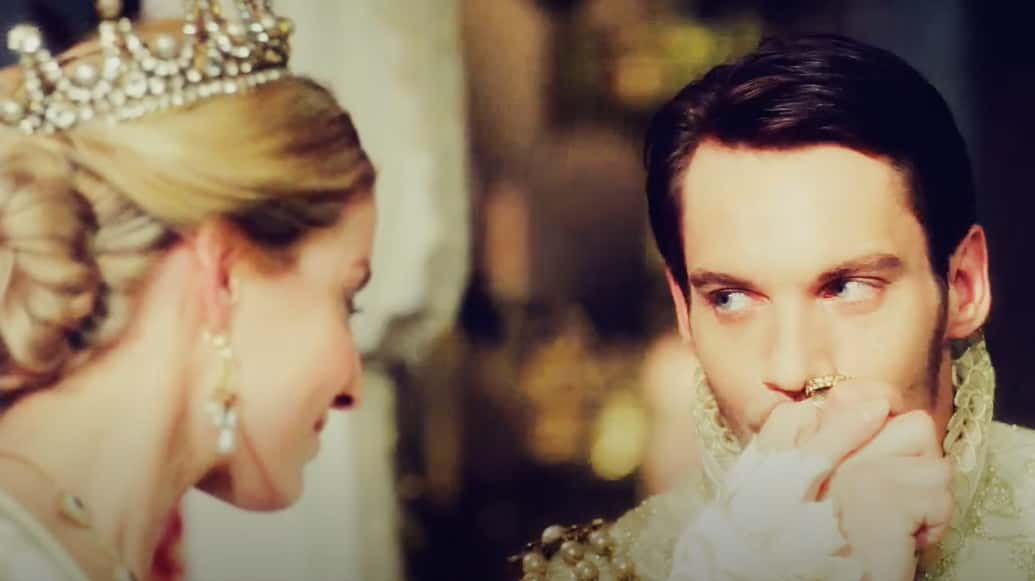 Showtime, The Tudors (2007–2010)
Showtime, The Tudors (2007–2010)
She Was More Than Just A Nice Girl
Jane’s nice-girl reputation today belies a complex, shrewd woman. To cement her place beside Henry, Jane changed many customs of Anne Boleyn’s more raucous court, including toning down parties and changing fashions. Another of her high standards? Her ladies-in-waiting had to wear a belt made up of at least 120 pearls if they wanted to see her, or else Jane wouldn’t even look at them.
 Showtime, The Tudors (2007–2010)
Showtime, The Tudors (2007–2010)
She Suffered The Same Fate As Her Predecessors
Just like Catherine of Aragon and Anne Boleyn, Jane was pregnant soon after her wedding—and just like them, she was in for tragedy. Sometime around Christmas 1536, she lost her child through miscarriage. Her response was harrowing. She went right back into bed with Henry again, and was pregnant just a month later.
In hindsight, it was too soon.
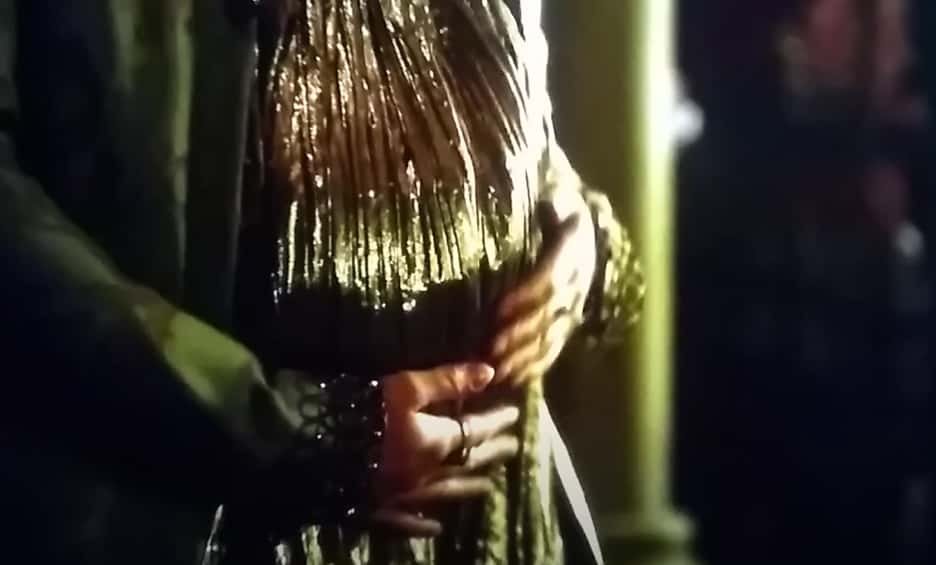 Showtime, The Tudors (2007–2010)
Showtime, The Tudors (2007–2010)
She Was Under Pressure
Everyone in the kingdom—Jane more than anyone—knew that she needed to provide Henry with a healthy male heir this time, and that the pressure was on. Although Henry gave Jane every material good she could have wanted during this time, he also kept her under virtual house arrest to make sure she didn’t overexert herself and lose another child.
Even so, the best laid plans…
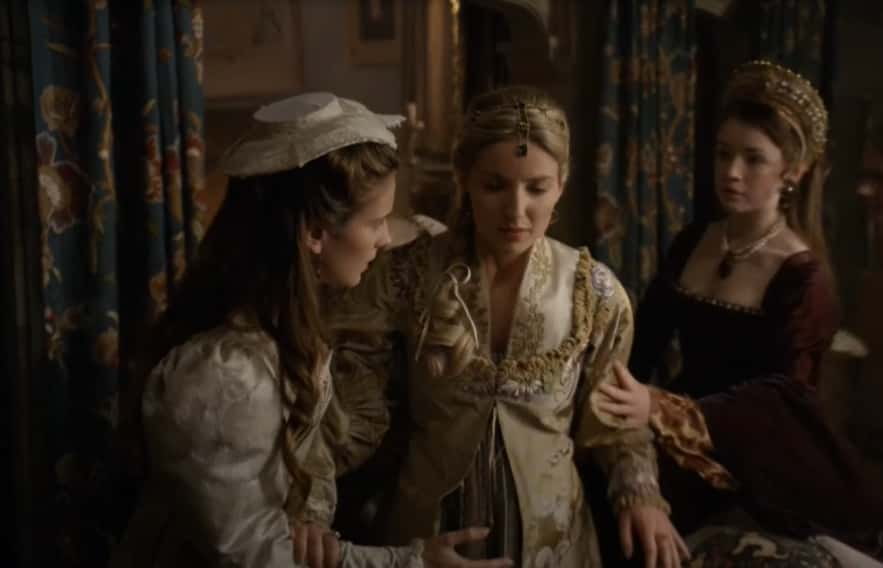 Showtime, The Tudors (2007–2010)
Showtime, The Tudors (2007–2010)
She Finally Gave Him A Son
In October of 1537, Jane went into labor. Complications arose from the start. Historians believe the baby was in an awkward position, and Jane spent a brutal two days and three nights trying to push the infant out. Still, when at last the child came, the room must have been ecstatic: It was a breathing boy, the future Edward VI.
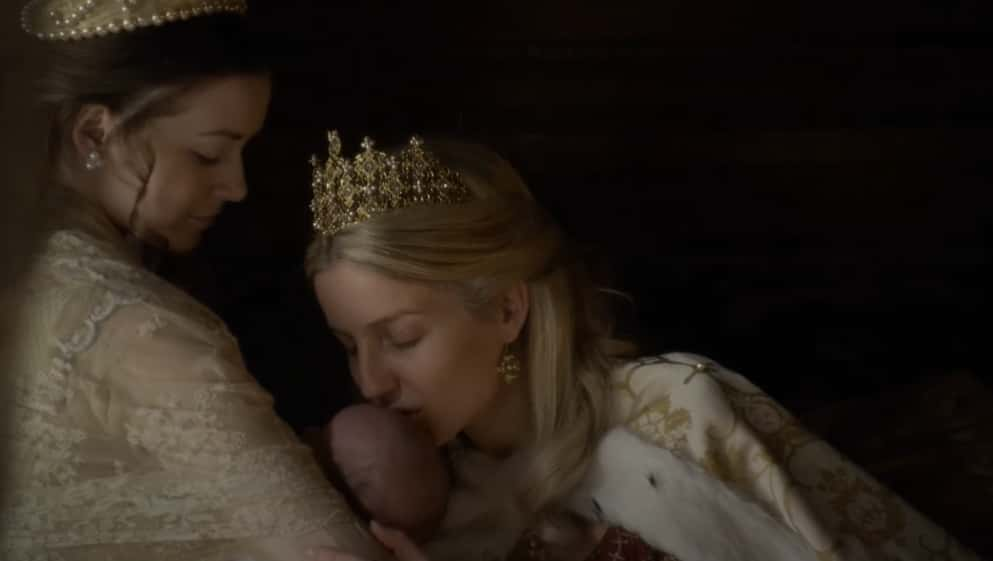 Showtime, The Tudors (2007–2010)
Showtime, The Tudors (2007–2010)
She Took A Turn For The Worse
Although Jane seemed healthy in the hours after the birth, within days it had all gone wrong. Jane reportedly experienced a “lax,” perhaps bleeding or loose bowels, and her health plummeted almost by the hour after that. The possible culprits range from a bacterial infection to a retained placenta to an embolism—but whatever the cause, it was fatal.
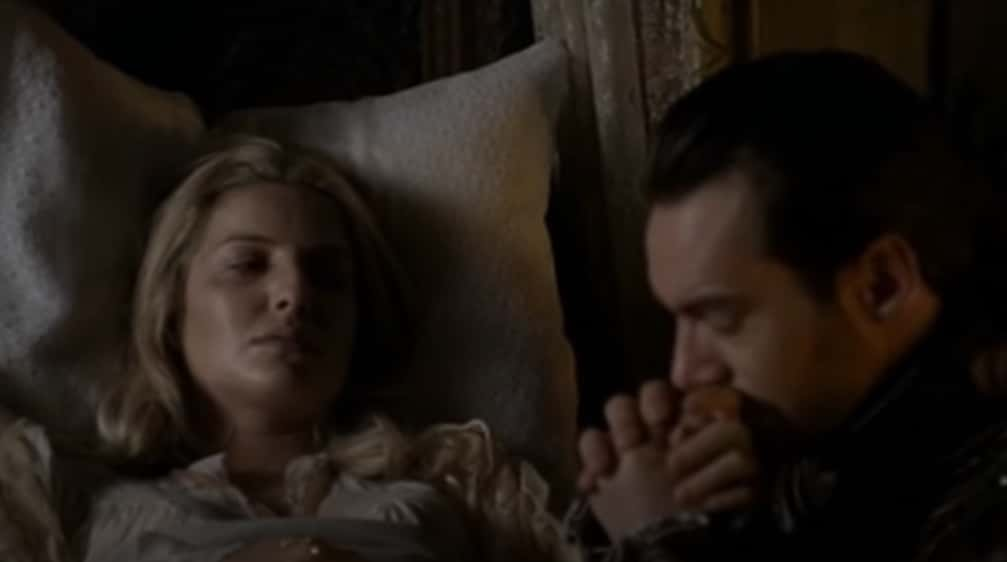 Showtime, The Tudors (2007–2010)
Showtime, The Tudors (2007–2010)
Her Life Was Cut Short
On October 24, 1537, Jane Seymour perished in her bed at the age of 29, having been Queen of England for less than two years. Even so, King Henry VIII never forgot her. He mourned her officially for three months, held off marrying for two years, and—no doubt thanks to her giving him a son—kept her as his favorite queen for the rest of his life.
On her epitaph, he had engraved: “Here lies Jane, a phoenix / Who died in giving another phoenix birth. / Let her be mourned, for birds like these / Are rare indeed”. She was a very tough act to follow.
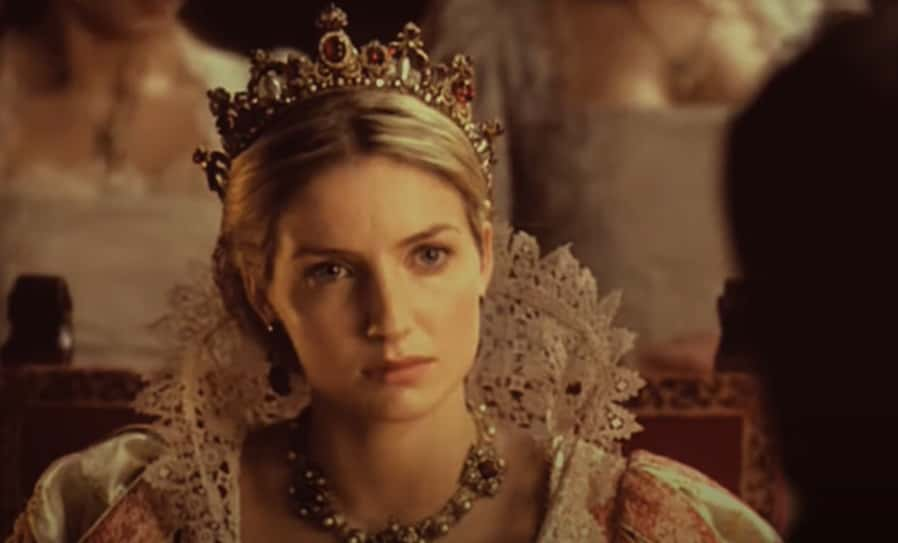 Showtime, The Tudors (2007–2010)
Showtime, The Tudors (2007–2010)
Anne Of Cleves
When Henry was ready to marry again in the late 1530s, he had his eye on Anne of Cleves, whose Protestant upbringing would be useful to him. The one thing he didn’t know was if her looks would please him, so he sent court painter Hans Holbein to capture her likeness, insisting that Holbein paint Anne accurately so he could properly judge her.
So, when the portrait came back and she was acceptable, Henry got to work on their wedding. This took no time at all to come undone.
 Hans Holbein the Younger, Wikimedia Commons
Hans Holbein the Younger, Wikimedia Commons
He Thought She Was Ugly
When Anne of Cleves came over to England to marry Henry, it all turned into a nightmare. Reportedly, Henry took one look at her and said, "She is nothing so fair as she hath been reported". Though he never called her the apocryphal insult the “Flanders Mare,” he might as well have.
Unfortunately for Henry (and Anne), the wheels were already in motion for the nuptials, and there was no turning back now.
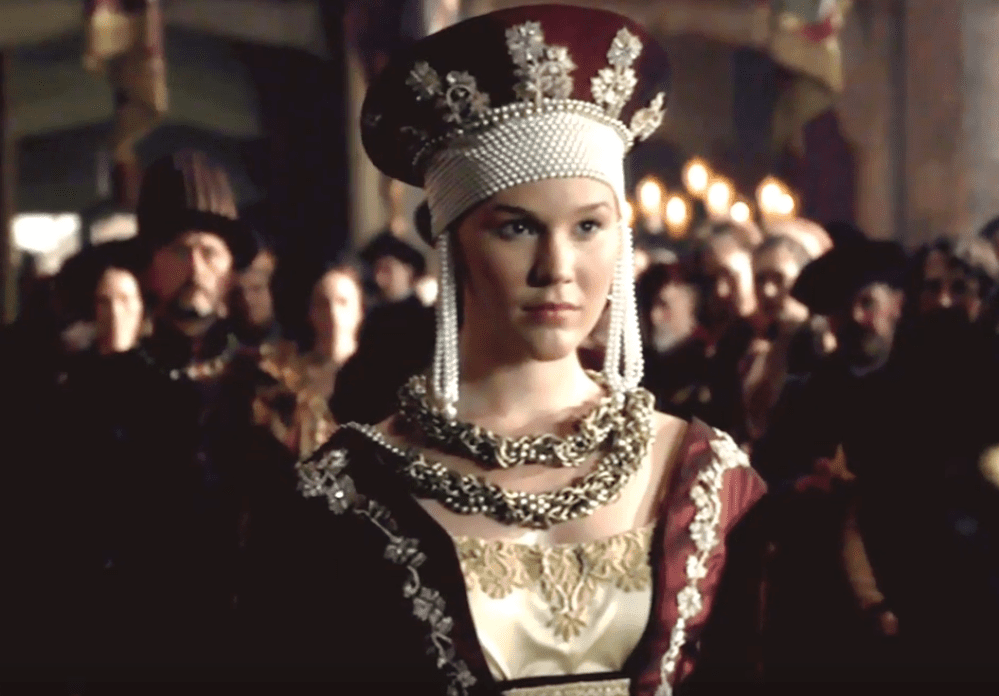 Showtime, The Tudors (2007–2010)
Showtime, The Tudors (2007–2010)
Her Wedding Night Was Awful
Anne of Cleves married Henry on January 6, 1540, and if the king hoped the wedding night would change his mind about his bride, he soon lost those hopes. Henry now complained, “I liked her before not well, but now I like her much worse”. He also talked about the “very evil smells about her,” and, in a very intimate scrutiny, noted the “looseness of her…tokens”.
At this point, Henry did what he did best: He started looking desperately for a way out.
 The Tudors (2007–2010), Showtime Networks
The Tudors (2007–2010), Showtime Networks
He Went Back To His Oldest Trick
Henry now decided his best option was to go the “Catherine of Aragon” route and nix his marriage to Anne of Cleves. Citing Anne’s previous, brief, and decade-old betrothal to another man, the king and his counselors argued the union was invalid. Apparently, though, this wasn’t quite enough, so Henry soon went for total humiliation.
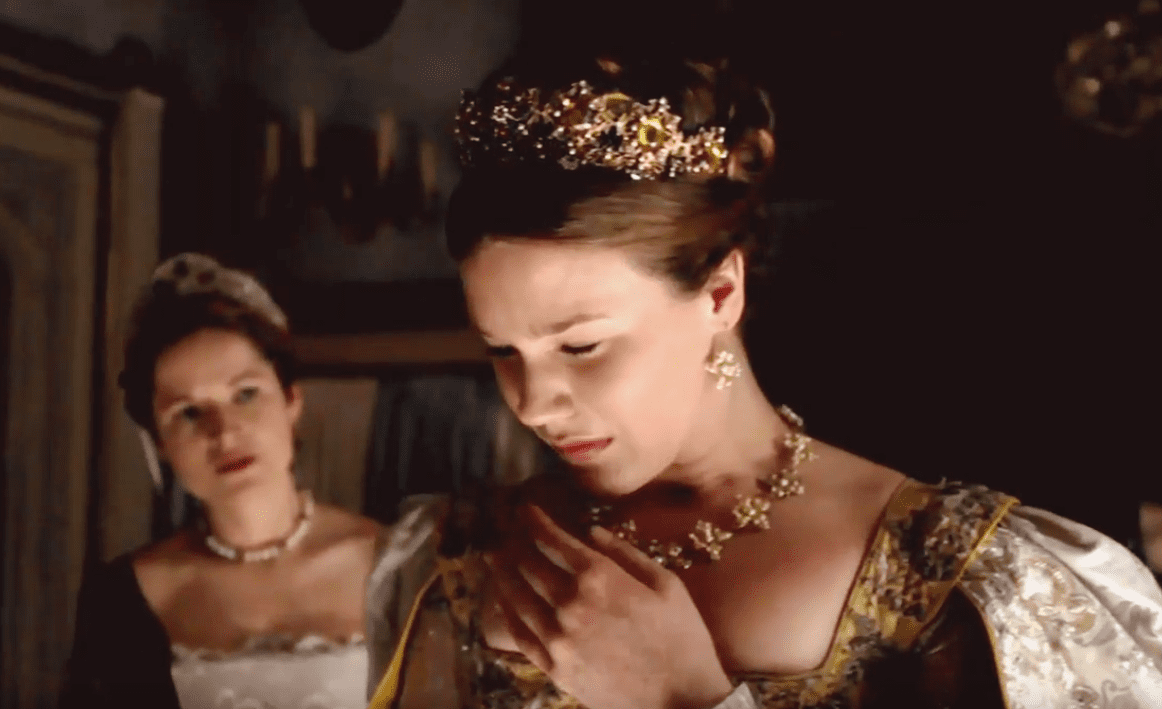 Showtime, The Tudors (2007–2010)
Showtime, The Tudors (2007–2010)
He Mortified Her
Henry went through a very official and very cruel trial in order to annul his marriage to Anne. These proceedings included assertions that even though he was absolutely, completely, totally virile, he simply could never consummate a marriage with someone like Anne of Cleves. The arguments couldn’t but degrade Anne…but they apparently proved convincing.
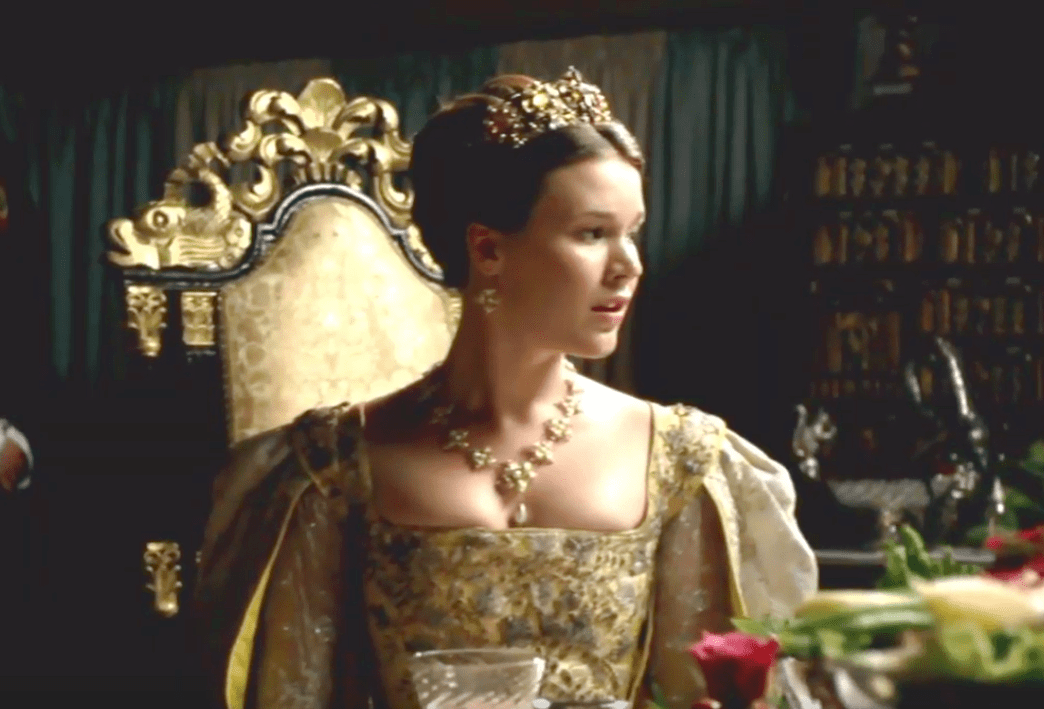 Showtime, The Tudors (2007–2010)
Showtime, The Tudors (2007–2010)
He Got His Second Divorce
The sham of a trial ended with Henry winning, and he was officially a single man on July 9, 1540, just six months after he’d married Anne of Cleves. In some ways, Anne got a good deal: She kept her head, maintained a comfortable place in Henry’s court, and even outlived all his future queens. Yet there is still one crucial part of her story missing.
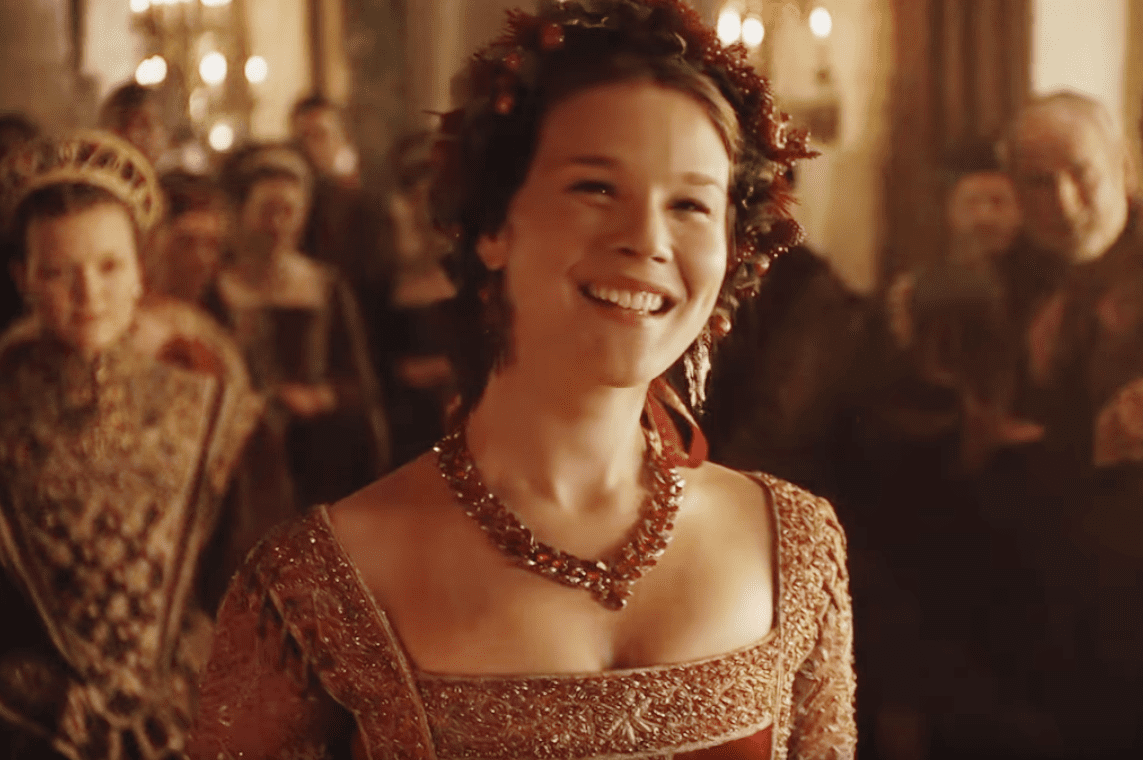 Showtime, The Tudors (2007–2010)
Showtime, The Tudors (2007–2010)
He Surprised Her
Anne is now infamous as Henry’s rejected queen, but modern historians suggest a more disturbing reason for his disgust. You see, when Anne was first heading to London, Henry secretly snuck into her roadside lodgings in disguise and approached her. The king believed that if they were truly meant to be, she’d sense it was him. Unfortunately, this didn’t happen.
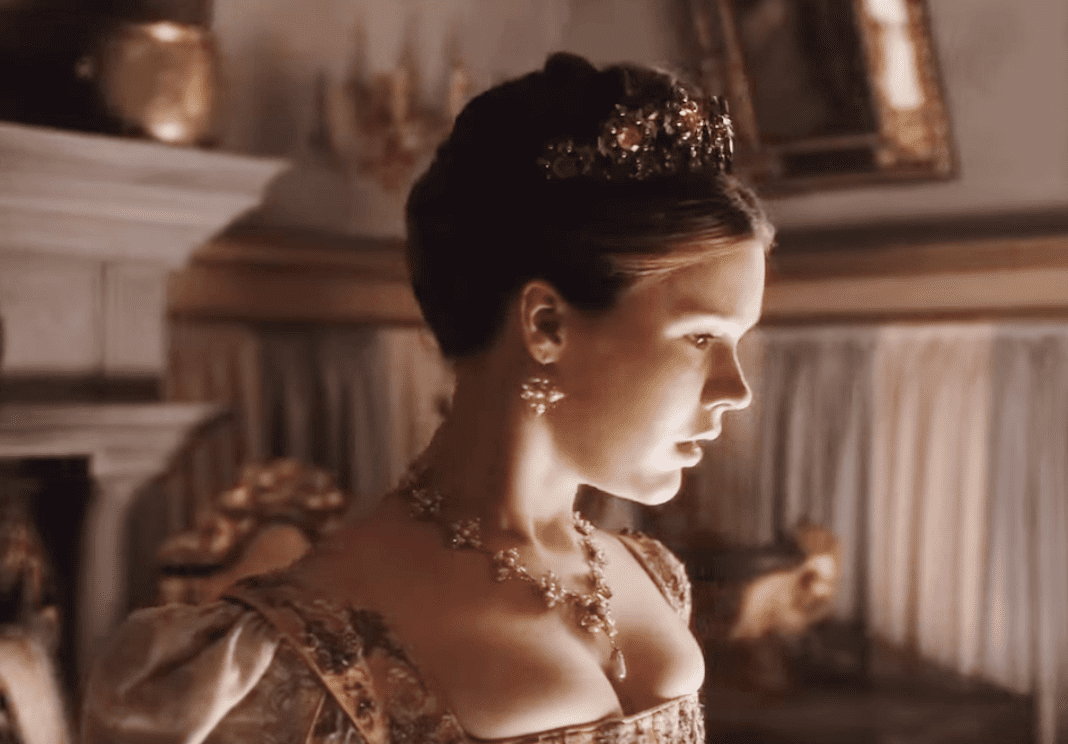 Showtime, The Tudors (2007–2010)
Showtime, The Tudors (2007–2010)
She May Have Rejected Him First
Quite reasonably, Anne was alarmed at the stranger in her vicinity, and either politely ignored his advances or else explicitly rebuffed them. Regardless of the details, Henry came away from his bride-to-be that day embarrassed, and some historians believe this may have been enough for him to hold a grudge even after she was his wife.
Still, Henry probably regretted his next wedding even more.
 Showtime, The Tudors (2007–2010)
Showtime, The Tudors (2007–2010)
Catherine Howard
Catherine Howard came into Henry’s life the same way many of his queens did: She was a lady-in-waiting to his wife, this time Anne of Cleves. Pretty, vivacious, and 17 years old to Henry’s middle age, Catherine pleased Henry immensely, and he claimed he had never known “[her] like to any woman”.
From then on, it moved too fast for Catherine to ever catch up.
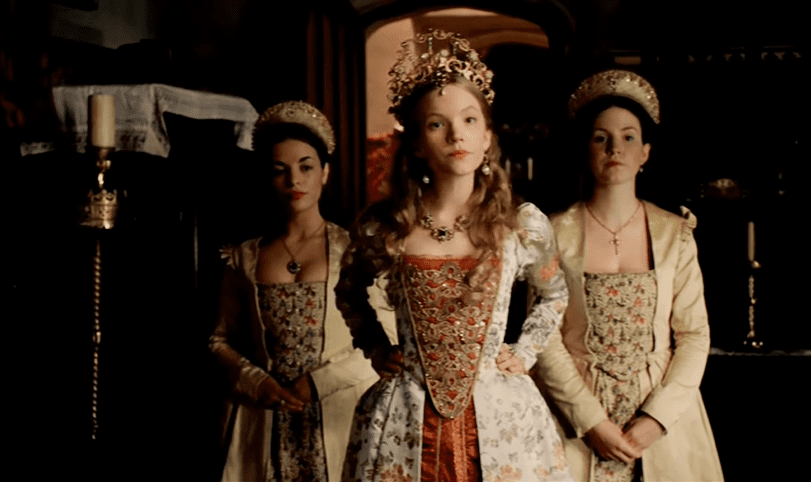 Showtime Networks, The Tudors (2007–2010)
Showtime Networks, The Tudors (2007–2010)
She Was Swept Up
Catherine Howard’s age wasn’t the only gap in their relationship. Minimally educated but notably lively, Catherine was something of a free spirit in the Tudor court. Meanwhile, thanks to the jousting accident Anne Boleyn had witnessed in 1536, Henry carried around a leg injury that would haunt him for the rest of his days, had gained a lot of weight since then, and was slowing down a great deal. Catherine could hardly be as enamored of Henry as he was of her.
But you couldn’t say no to a king, and besides, Catherine’s ambitious family were very pleased with Henry’s interest. Soon, then, their relationship went from intimate to official.
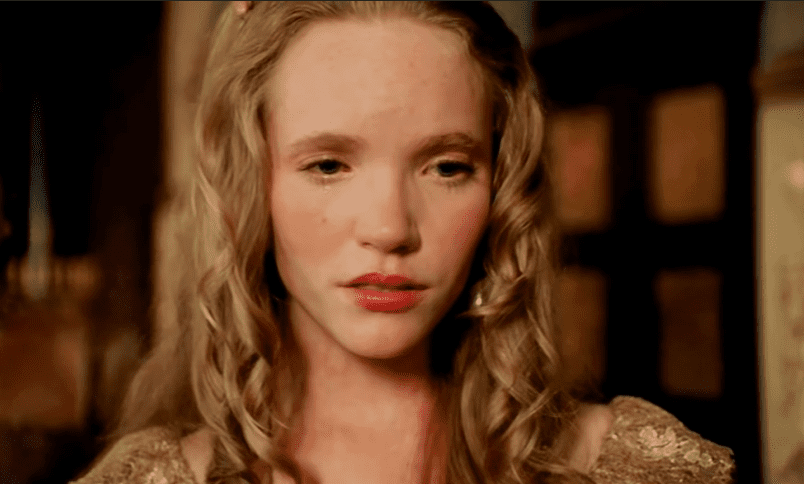 Showtime Networks, The Tudors (2007–2010)
Showtime Networks, The Tudors (2007–2010)
He Kept Her In Reserve
By now, Henry VIII very much had a pattern, and he and Catherine Howard married just 19 days after he annulled his union with Anne of Cleves. In a bid to show her devotion, Catherine took the official motto, “Non autre volonte que la sienna” or “No other will but his". Looking back, this was a bad omen.
 Showtime Networks, The Tudors (2007–2010)
Showtime Networks, The Tudors (2007–2010)
She Had Secrets
In truth, when the teenaged Catherine married Henry, she had some skeletons in her closet. At a time when all women were expected to be completely inexperienced, Catherine…wasn’t.
While staying at her step-grandmother’s house in a dorm with other girls, Catherine had begun a dalliance with a man named Francis Dereham, and may have even married him before they were caught out.
This alone could have ruined her, but unfortunately, Catherine was keeping even more secrets.
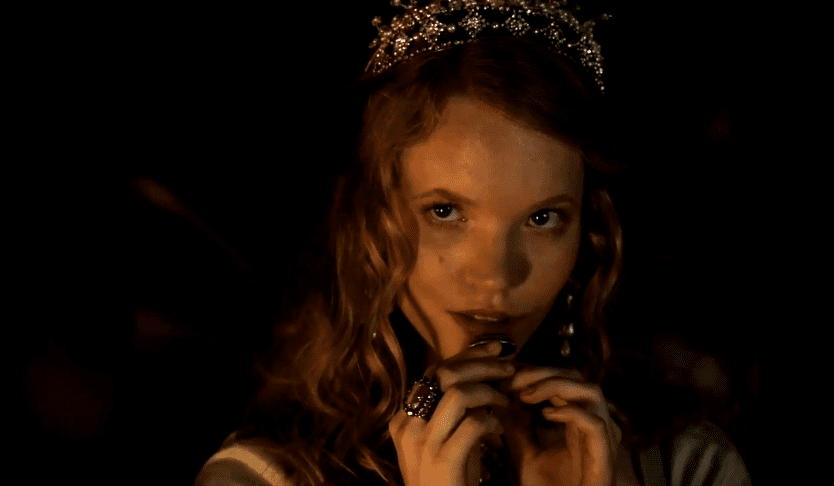 Showtime Networks, The Tudors (2007–2010)
Showtime Networks, The Tudors (2007–2010)
She Nurtured An Illicit Crush
Before Catherine married Henry, she was actively courting one of the king’s favorites, Thomas Culpeper. The trouble was…this courting didn’t stop once she became queen. Whether it turned more physical is still a matter of debate, but she and Culpeper certainly arranged secret meetings through her lady-in-waiting.
The truth came out in an explosive way.
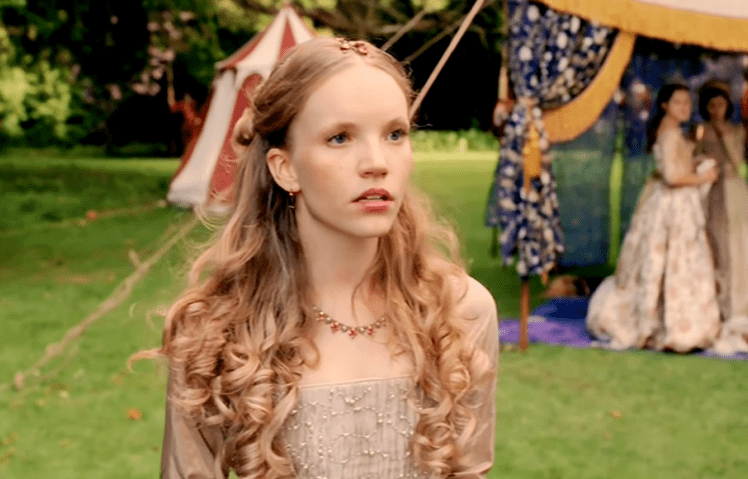 Showtime Networks, The Tudors (2007–2010)
Showtime Networks, The Tudors (2007–2010)
Her Past Came Back To Haunt Her
All eyes were on Catherine now that she was Henry’s wife, and her old dorm friends from her time at her step-grandmother’s began grumbling about her previously “light” ways, particularly when it came to her old relationship with Francis Dereham. Eventually, someone reported these rumors to the Archbishop of Canterbury, Thomas Cranmer, who then began looking into Catherine.
At that point, it all fell apart.
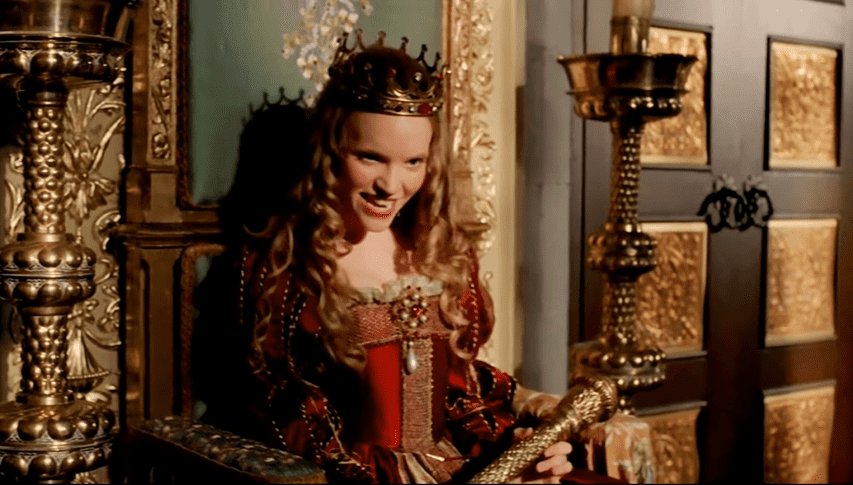 Showtime Networks, The Tudors (2007–2010)
Showtime Networks, The Tudors (2007–2010)
Her Lady-In-Waiting Gave Her Away
Cranmer questioned Catherine’s lady-in-waiting, hoping to find out more information about her old flame Francis Dereham. He got a much different and darker story. The terrified woman began telling him all about Catherine’s current secret meetings with Thomas Culpeper.
Horrified, Cranmer searched the queen’s rooms—and found a letter that would be her doom.
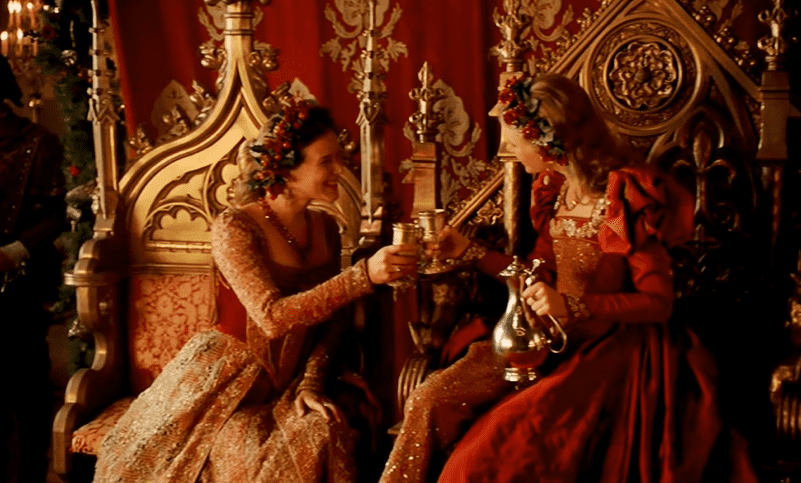 Showtime Networks, The Tudors (2007–2010)
Showtime Networks, The Tudors (2007–2010)
She Wrote A Tell-All Letter
Among Catherine’s papers, aides discovered a letter Howard had written to Culpeper that made her emotional attachment very clear. In it, she wrote, "When I think again that you shall depart from me again it makes my heart die to think what fortune I have that I cannot be always in your company". To make matters worse, when Cranmer questioned Culpeper, he admitted that, "He meant to do ill with the Queen and that likewise the Queen so minded with him".
Catherine’s response to all this was gut-wrenching.
 Showtime Networks, The Tudors (2007–2010)
Showtime Networks, The Tudors (2007–2010)
She Was Locked Up
When Thomas Cranmer came to detain Catherine, she became almost insensate with terror, and Cranmer was so afraid she’d harm herself that he ordered servants to remove all sharp objects from her grasp. Reportedly, she even tried to break free of captivity to beg Henry for forgiveness, and attendants had to drag her back to confinement.
Even then, Catherine may not have realized that all hope was lost.
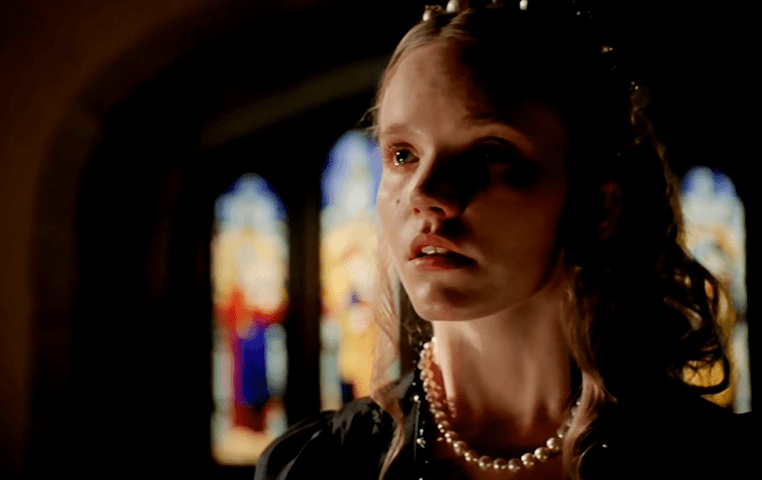 Showtime Networks, The Tudors (2007–2010)
Showtime Networks, The Tudors (2007–2010)
He Went On An Execution Spree
In late November of 1541, less than two years into her marriage, Henry VIII officially stripped Catherine of her crown. Just weeks later, the king executed both Thomas Culpeper and Catherine’s reported ex-husband Francis Dereham, the latter of which got the particularly gruesome punishment of being drawn and quartered.
Catherine had to know she was next.
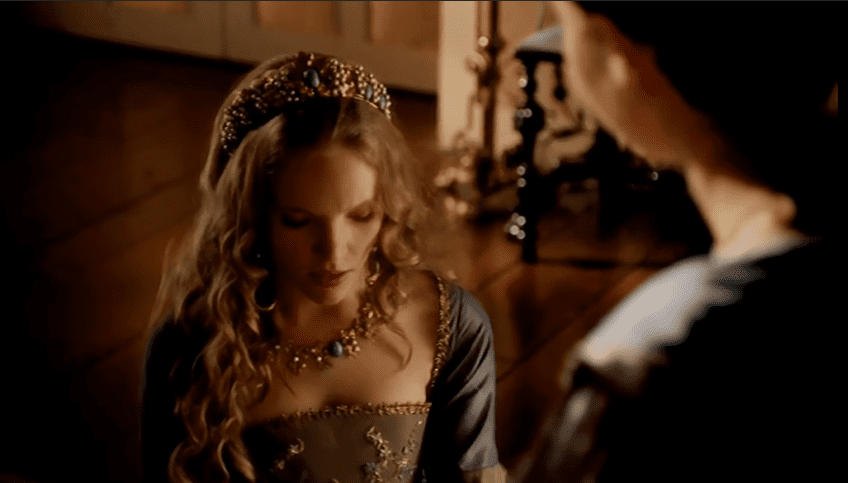 Showtime Networks, The Tudors (2007–2010)
Showtime Networks, The Tudors (2007–2010)
She Nearly Lost Her Mind
As Catherine’s execution day neared, she alternated between animal panic and near comatose fear in her cell in the Tower of London. She never did manage to get her head around her fate: Although she reportedly practiced how to lay her neck on the block each night, when she finally climbed the real scaffold her body failed her once more and she needed help getting up to it.
Her Last Words Were For Her Family
On February 13, 1542, Catherine joined Culpeper and Dereham with a single stroke of the executioner’s blade. Although folklore claims her last words were, “I die a Queen, but I would rather have died the wife of Culpeper,” Howard—likely in a bid to save her family from any further blowback—was actually penitent, apologizing for betraying Henry and saying she deserved “to die a thousand deaths”.
When she passed, the teenage queen was still only around 19 years old.
 Showtime Networks, The Tudors (2007–2010)
Showtime Networks, The Tudors (2007–2010)
Catherine Parr
Clearly, Henry and his ego did not take Catherine Howards’s betrayal well, and his search for his next wife was more for a companion than a lover. His eye landed on the twice-widowed, independently wealthy Catherine Parr. A long-time figure at court, Catherine was measured, intelligent, and a stately 5’10” tall.
In other words, she seemed like the perfect candidate. Except she wasn’t.
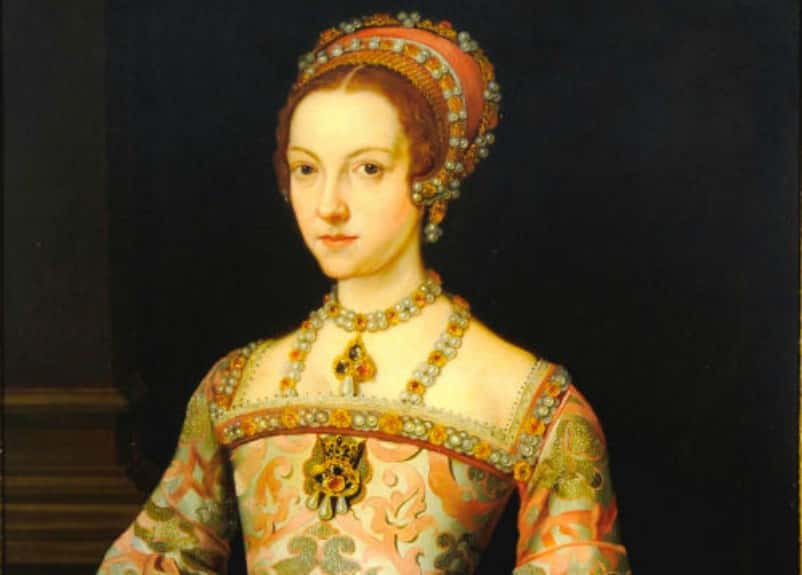 Master John, Wikimedia Commons
Master John, Wikimedia Commons
She Was In Love With Another Man
When Henry began considering Catherine Parr, she was already far along in a courtship with Thomas Seymour, none other than Queen Jane Seymours’s brother. Thomas was handsome and close to Catherine in age, and the pair had seriously discussed marriage together.
But, like Catherine Howard before her, Parr knew she couldn’t say no to the king, so when he proposed marriage she dutifully dropped Seymour. Unlike Catherine, she actually made this work.
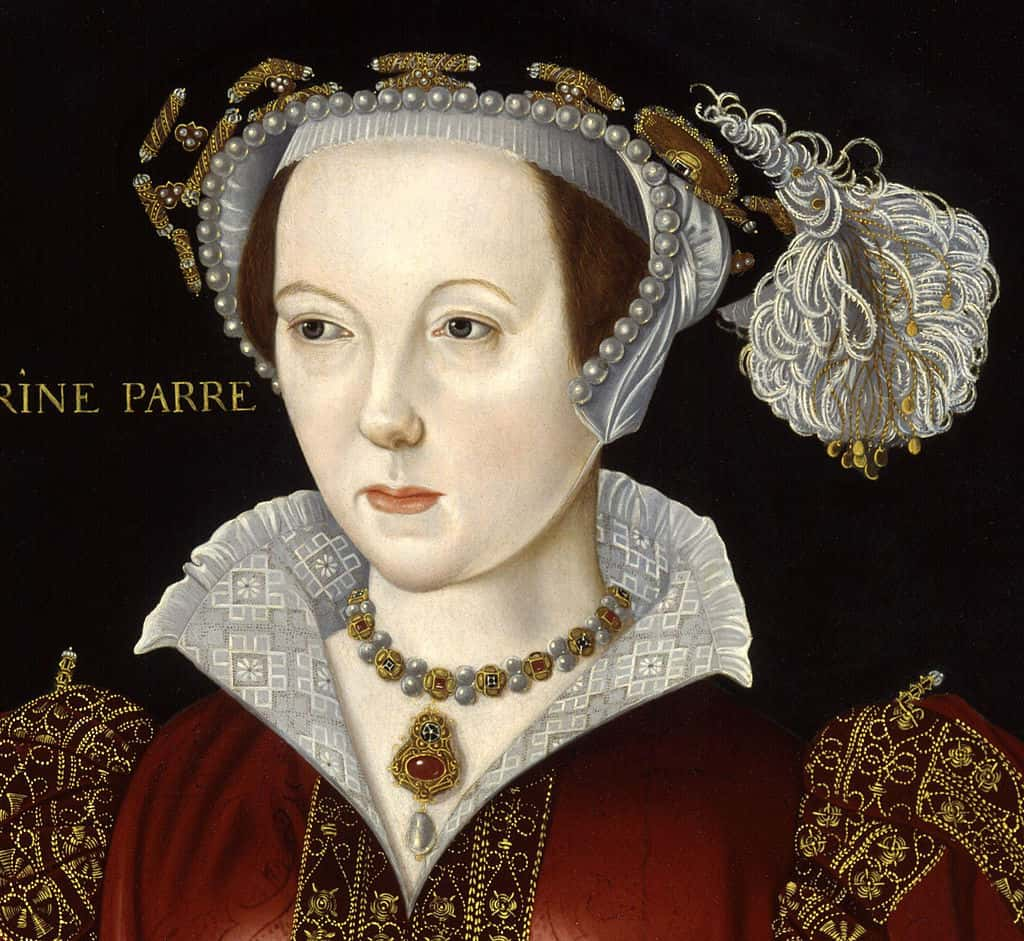 National Portrait Gallery, Wikimedia Commons
National Portrait Gallery, Wikimedia Commons
She Brought Them Together
As it happened, King Henry VIII chose right when it came to Catherine Parr. After their marriage in 1542, she was a reparative influence not just on him and his physical ailments, but also on the dropped threads within his patchwork family. Parr was already friendly with his eldest daughter Mary, became close to his daughter Elizabeth—Henry even made Parr Elizabeth’s guardian if she outlived him—and even the young Prince Edward approved of her.
But there was a little known dark side to her marriage.
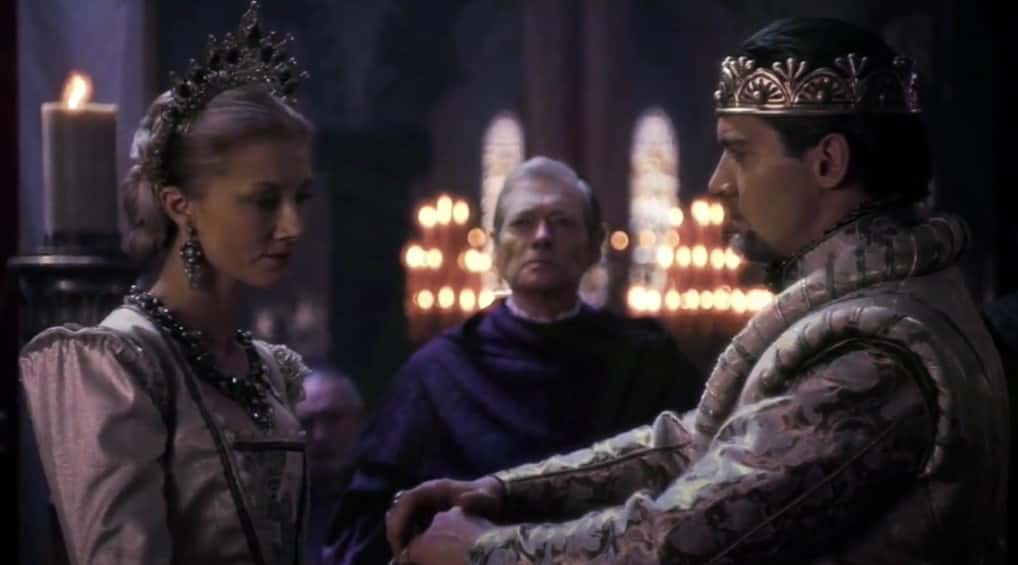 The Tudors (2007–2010), Showtime Networks
The Tudors (2007–2010), Showtime Networks
He Signed Her Arrest Warrant
In 1546, some of Henry’s aides accused Catherine of harboring more radical religious beliefs than the Crown would allow (and to be fair, she did have these beliefs). Henry, likely after a personal tiff with Catherine about religion, took these accusations to heart and soon signed a warrant for her arrest. Then Catherine got very lucky.
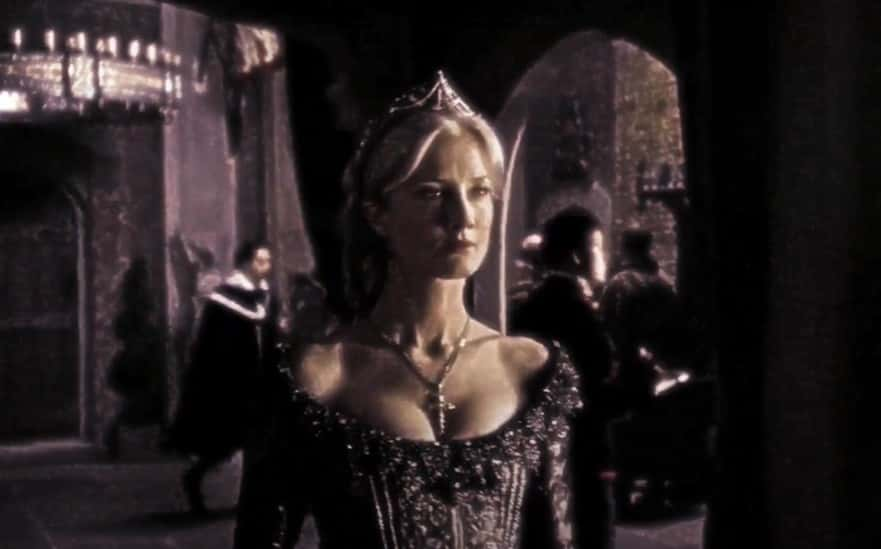 The Tudors (2007–2010), Showtime Networks
The Tudors (2007–2010), Showtime Networks
She Got A Lucky Break
Someone tipped off Catherine to what was brewing, and she put a brilliant plan into action. Heading Henry off at the pass, she went to him and apologized for anything she had ever done to offend him in their talks, claiming she was “but a woman” and that in truth she deferred to him in all matters, including religious ones.
Henry, mollified, forgave his wife, and nothing came of the warrant.
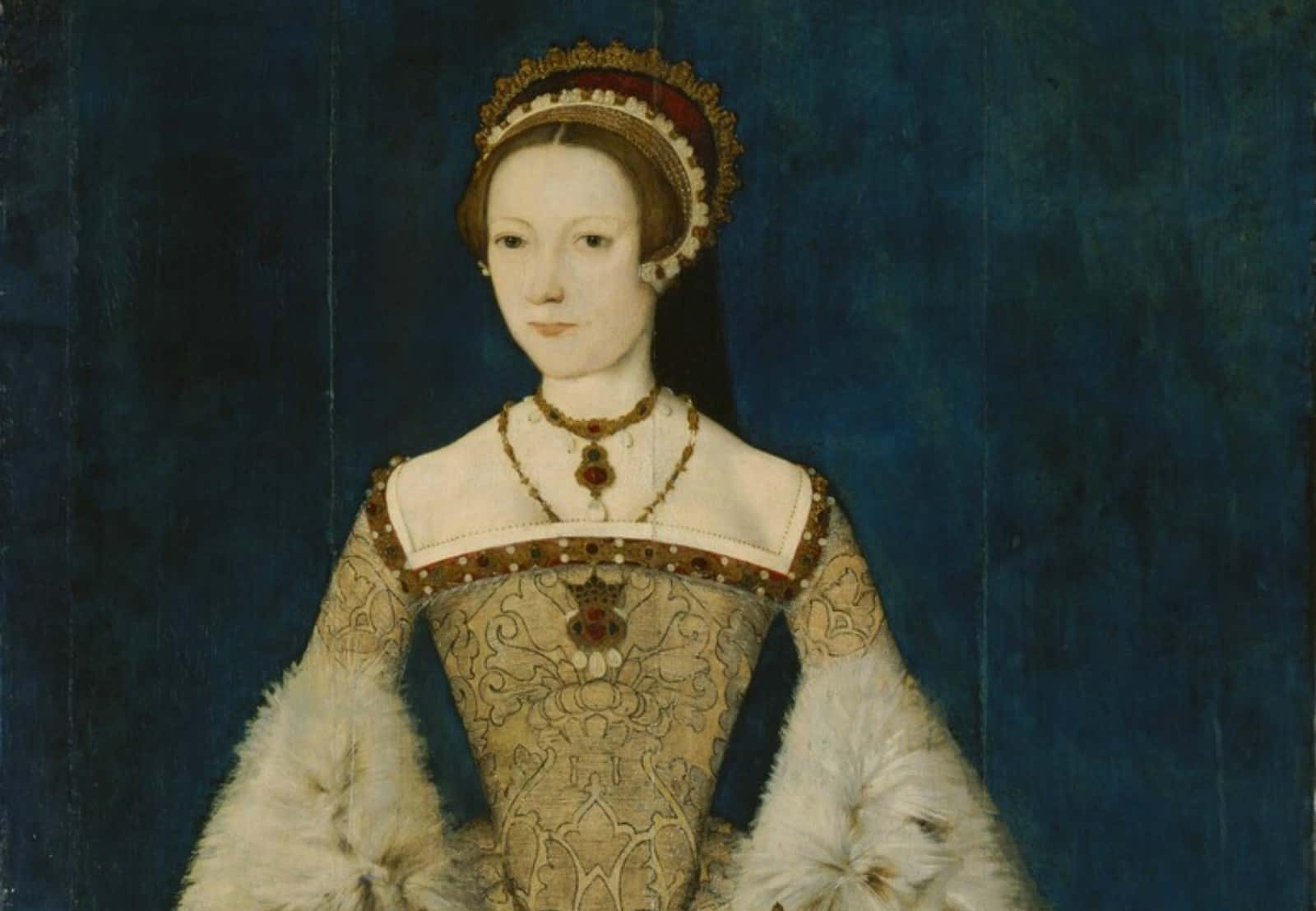 Master John, Wikimedia Commons
Master John, Wikimedia Commons
He Rewarded Her
In 1547, King Henry VIII’s health issues finally caught up with him, and he passed at the age of 55. He nonetheless made sure to thank Catherine, bequeathing £7,000 a year to his “faithful spouse”—a massive sum for the time, but likely still not enough given everything she had to put up with. Which might explain her next move.
 Showtime, The Tudors (2007-2010)
Showtime, The Tudors (2007-2010)
She Moved On Immediately
Just four months after King Henry VIII passed and Edward VI became king, Catherine caused a stir at court. She jumped right into marriage with Thomas Seymour, whom she had apparently never forgotten. Nonetheless, she did fulfill her obligation to Henry and take the young Princess Elizabeth with her as her ward.
It wasn’t long before this fairy tale turned into a nightmare.
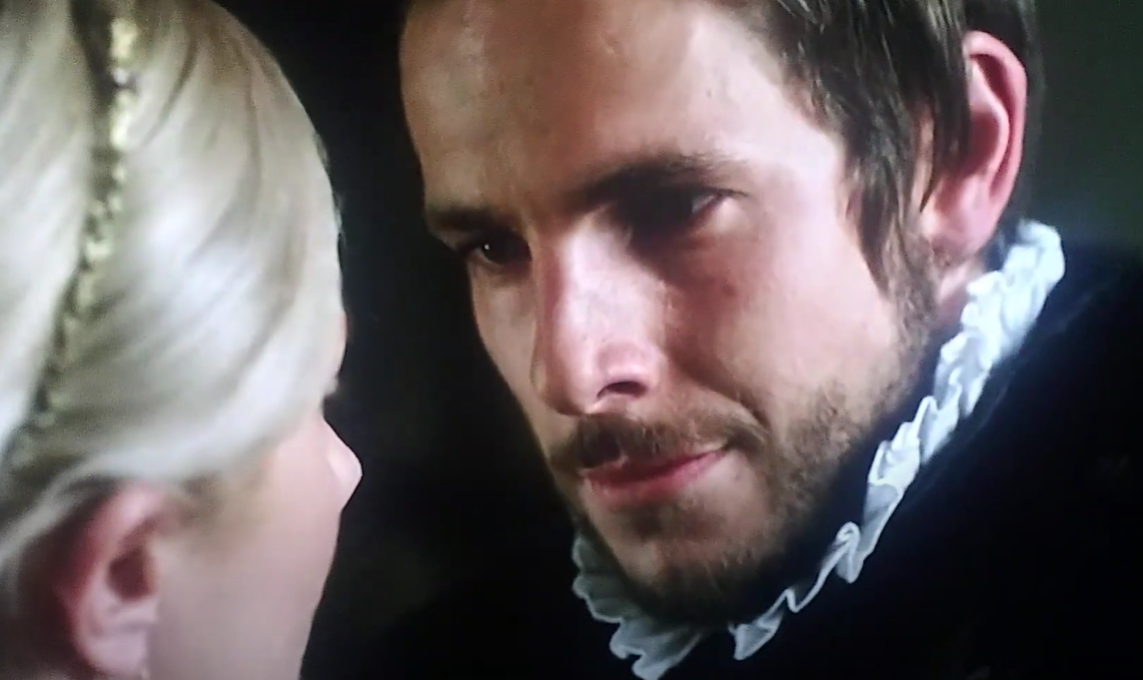 Showtime, The Tudors (2007-2010)
Showtime, The Tudors (2007-2010)
Her Next Marriage Was Somehow Worse
Even though the 35-year-old Parr fell pregnant for the first time while married to Seymour, it was far from a happy family. Seymour was the apple of Parr’s eye, true, but he had his own eyes on Princess Elizabeth, and would “flirt” with and accost the young girl at all hours, sometimes even getting Catherine in on the action.
Eventually, the situation escalated, and a jealous, alarmed, or jealous and alarmed Catherine sent Elizabeth away from the house. Unfortunately, she couldn’t enjoy the quiet for long.
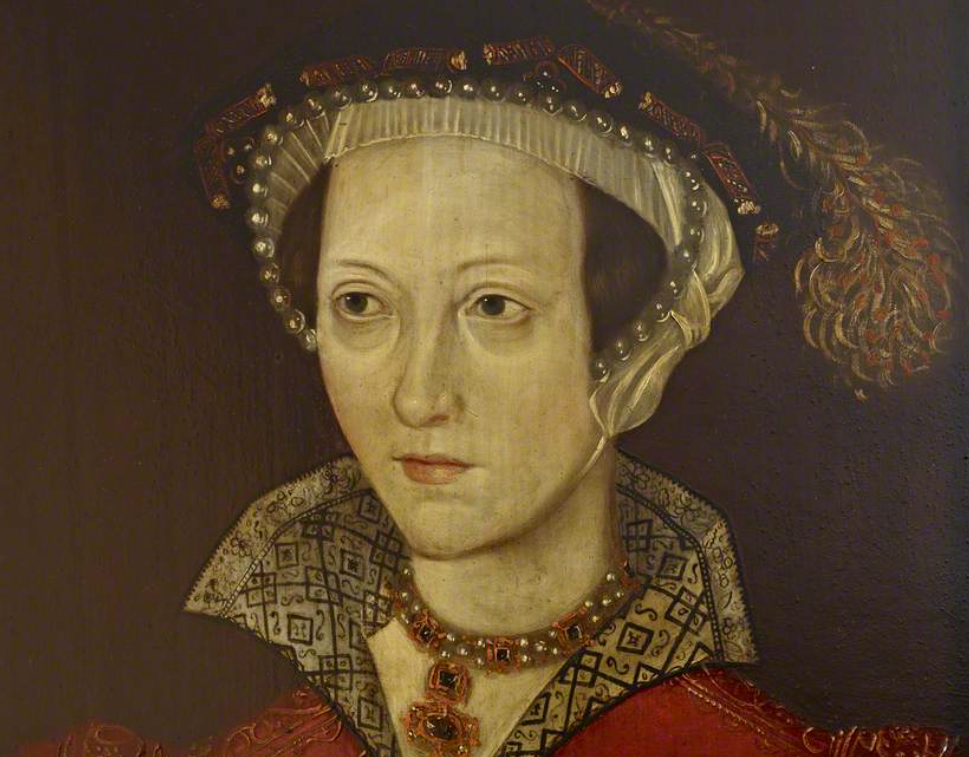 National Trust, Wikimedia Commons
National Trust, Wikimedia Commons
She Perished In Childbirth
In the summer of 1548, Catherine gave birth to her first and only child, Mary Seymour. Then fate threw in a cruel twist. After nearly four decades of survival, including next to a dangerous king, Catherine Parr fell ill with postnatal complications and passed eight days after giving birth. She had only outlived Henry for two years.
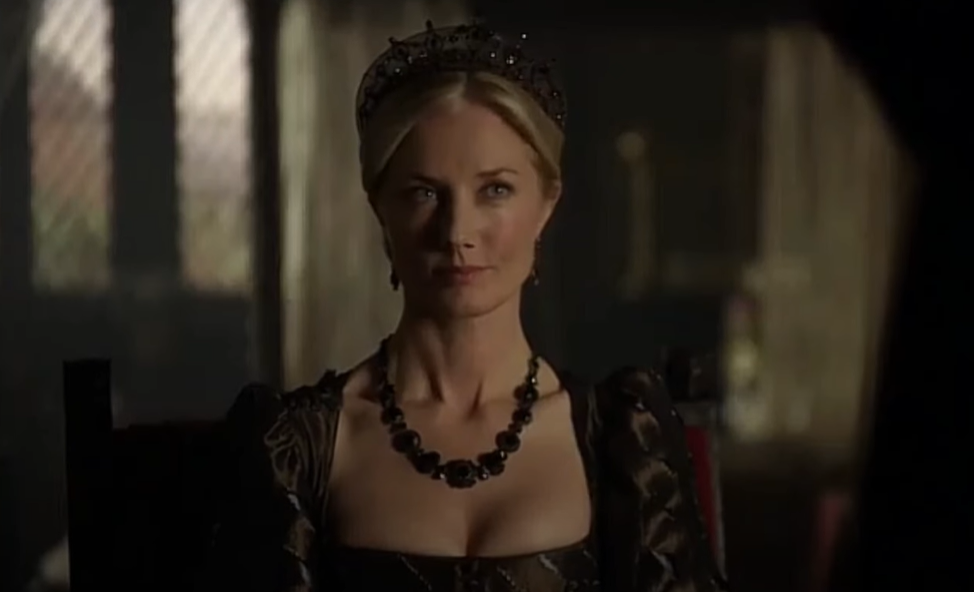 Showtime, The Tudors (2007-2010)
Showtime, The Tudors (2007-2010)
The Six
Henry VIII’s queens linger in our memory all these centuries later not just because of the tragedies they found themselves embroiled in, but also because of the different and fascinating ways they navigated the obstacles of their positions, powers, and husband—even and especially when they stumbled and faltered.
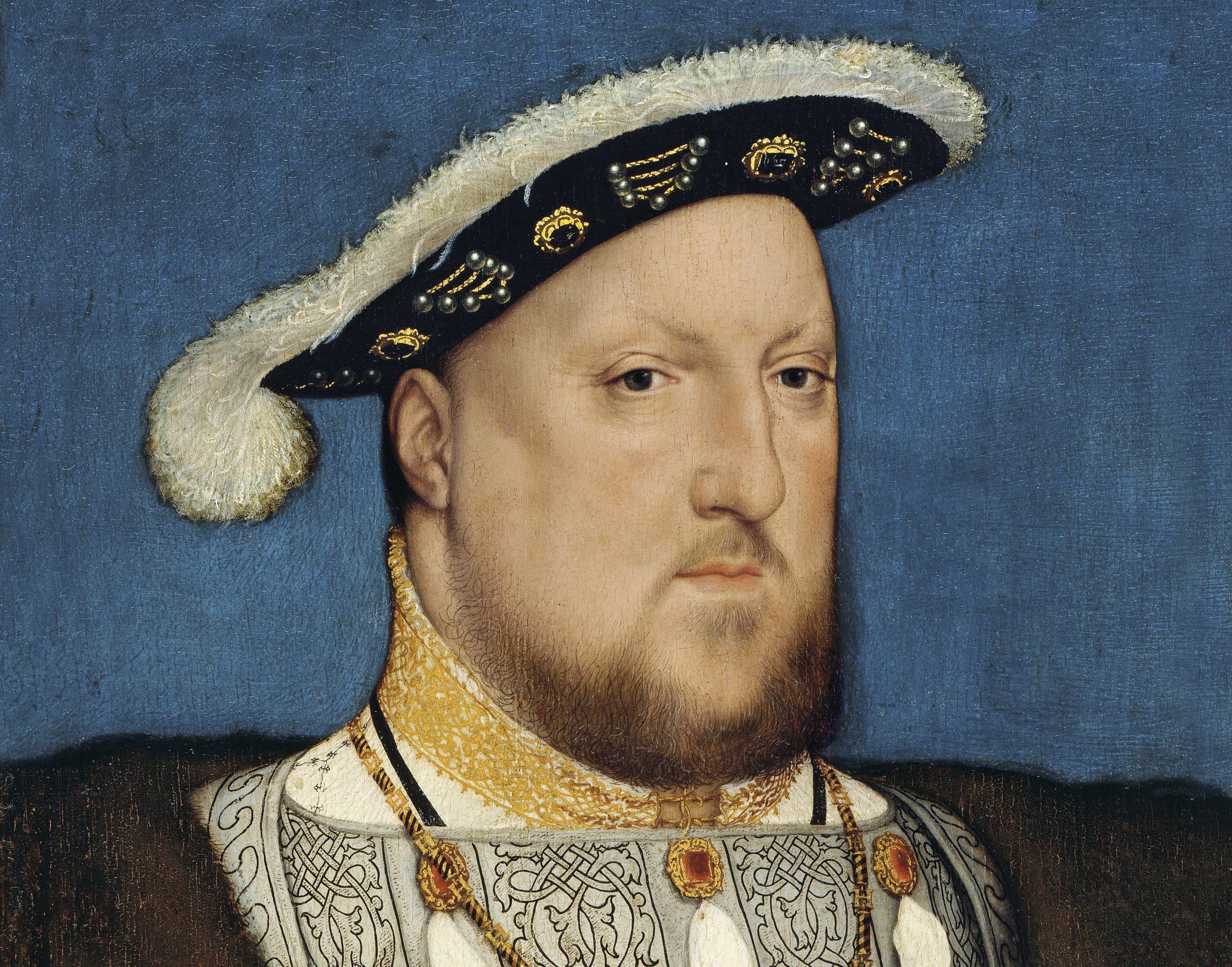 Hans Holbein the Younger, Wikimedia Commons
Hans Holbein the Younger, Wikimedia Commons
You May Also Like:
The Romanovs Only Had Themselves To Blame
Cleopatra Has Been Widely Misrepresented For Years

